
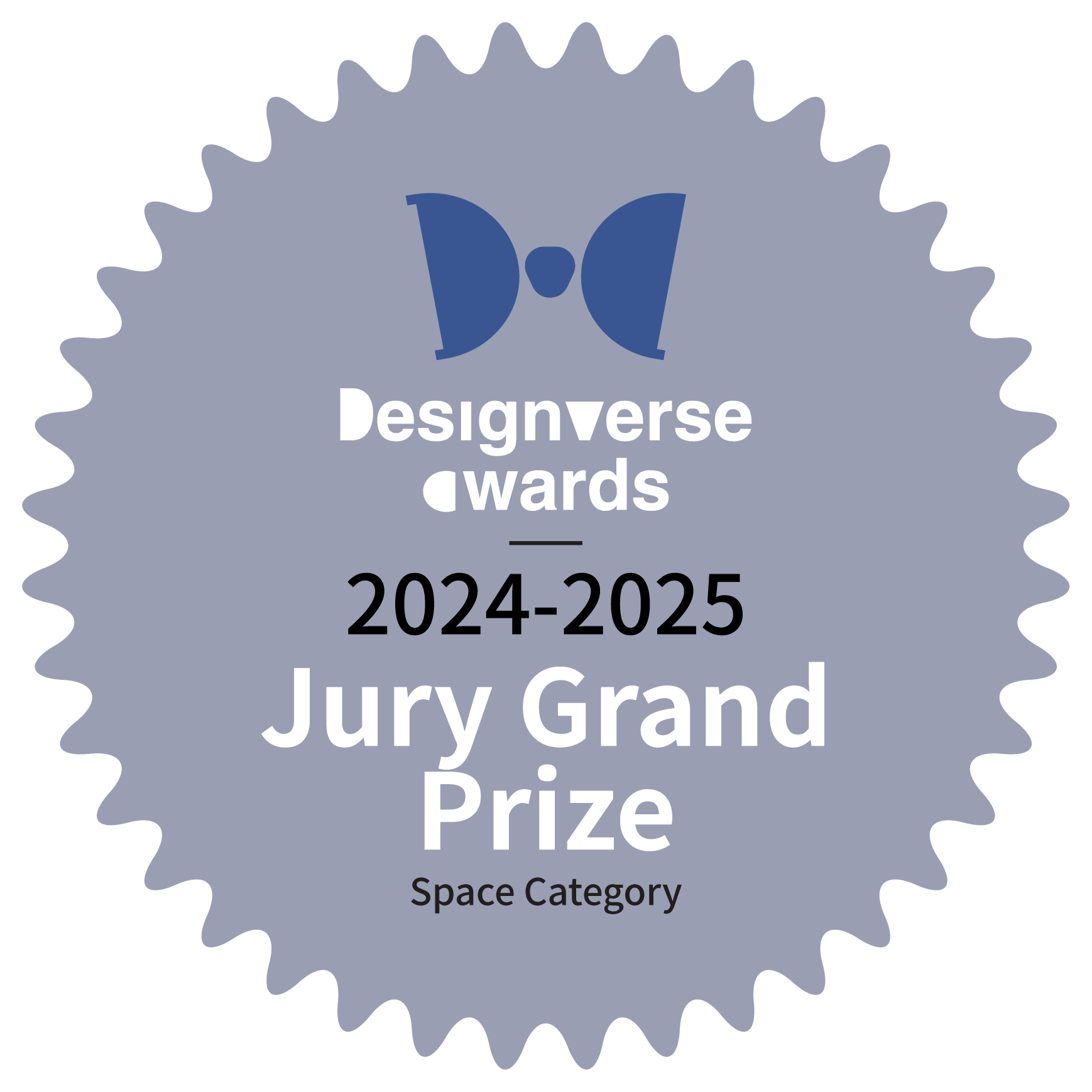
Opera Park | COBE
COBE ,发布时间2025-01-02 19:30:57
Project Name: Opera Park
Location: Copenhagen, Denmark
Area: 21500 m²
Year: 2023
Design Office: COBE
Owner: The A.P. Møller Foundation
Photo Credits: Francisco Tirado
版权声明:本链接内容均系版权方发布,版权属于 COBE,编辑版本版权属于设计宇宙designverse,未经授权许可不得复制转载此链接内容。欢迎转发此链接。
A romantic garden addressing today’s challenges
In 2019, following a design competition, The A.P. Møller Foundation appointed the Danish architecture studio Cobe to design a new park at a former industrial island in Copenhagen’s inner harbor. Located next to The Royal Danish Opera, the site had been a modest green lawn since the completion of the Opera nearly 20 years ago. Utterly transformed today, the island which was otherwise prime for developing new housing, is now home to a diverse and natural landscape. Named The Opera Park, this new public harbor-front park creates a green counterpoint to Copenhagen's otherwise densely built inner harbor.
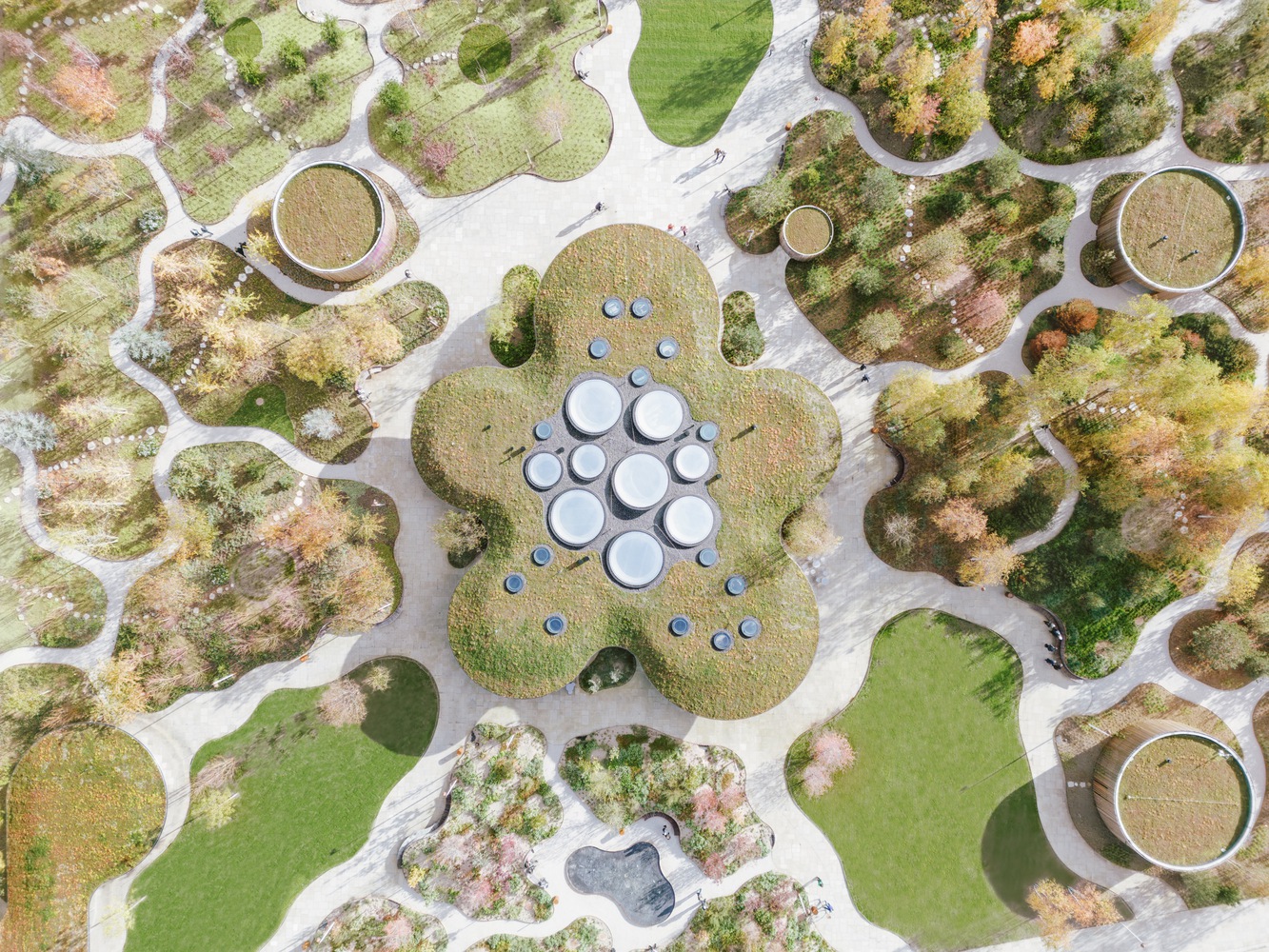
© Francisco Tirado
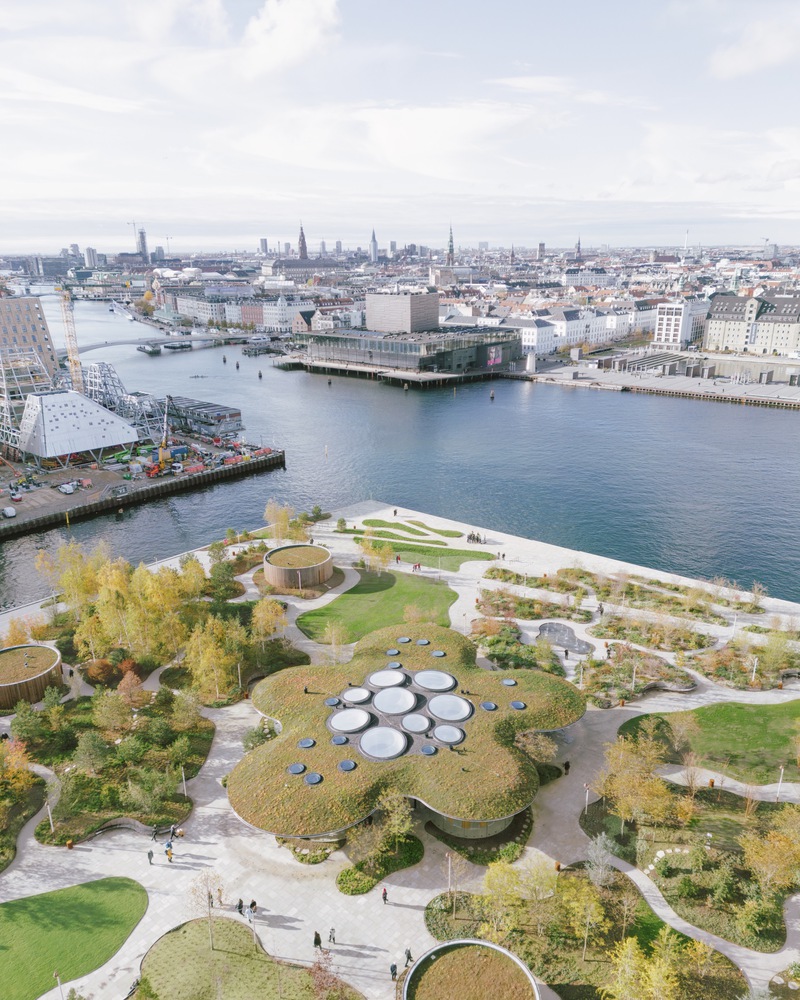
© Francisco Tirado
The park, with the size of three soccer fields, consists of six gardens from various parts of the world: the North American Forest, the Danish Oak Forest, the Nordic Forest, the Oriental Garden, the English Garden, and the Subtropical Garden housed within a greenhouse and atrium at its center. The diverse gardens hold surprises such as a fountain, a water lily pond, and a reflecting pool where drops of water from a mast gently strike the water’s surface in a soothing rhythm. Meandering paths and organically shaped flowerbeds knit together the park’s elements.
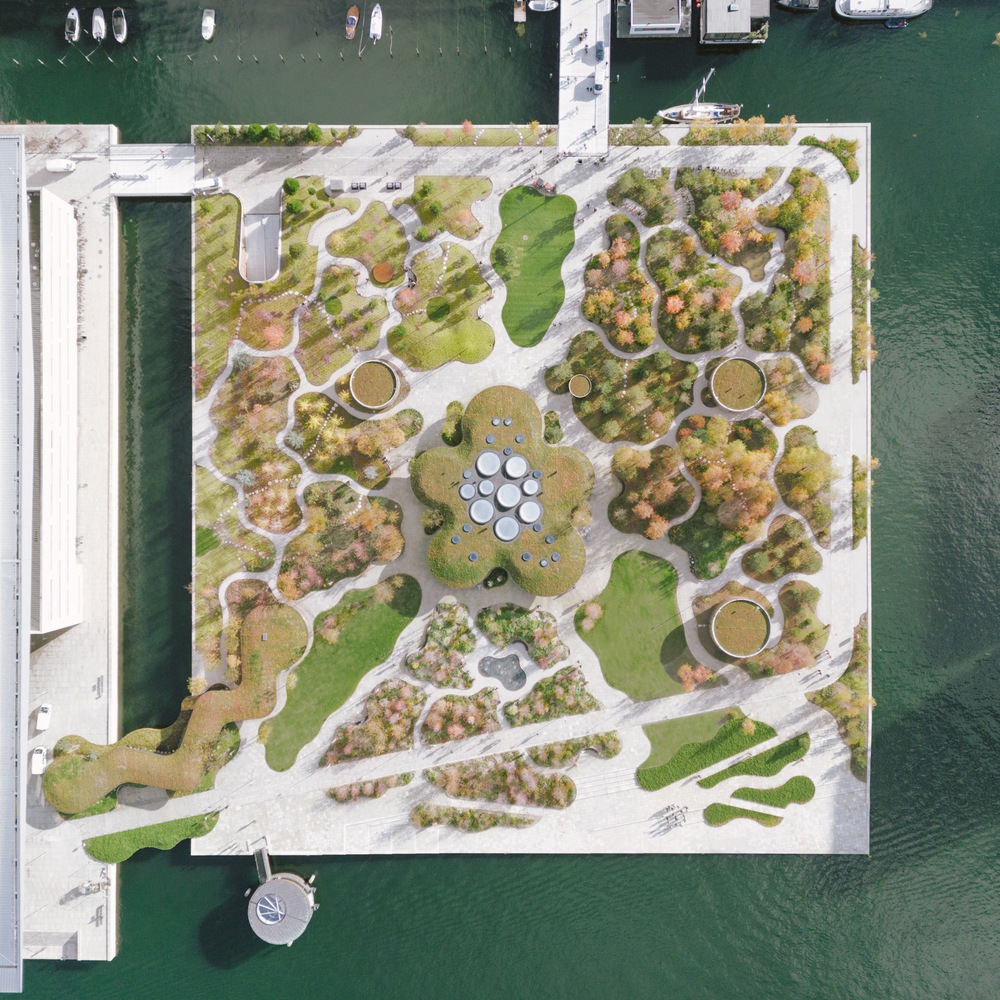
© Francisco Tirado
A year-round oasis, setting the stage for all kinds of life
Designed to be an inviting, all-year-round public attraction, the park features no less than 628 trees, 80,000 herbaceous perennials and bushes, and 40,000 bulb plants, from all around the world. In total, 223 unique exotic and local species provide a vibrant and ever-changing backdrop for visitors. The vegetation’s appearance, scent, color, and density vary with the seasons. Spring blooms in a rich color palette, summer brings various shades of green, autumn showcases red and yellow tones, and winter is dominated by evergreen pine trees and frozen ponds. The wide variety of plant species and diversity of sizes provide a rich environment for birds and insects to find food and shelter.
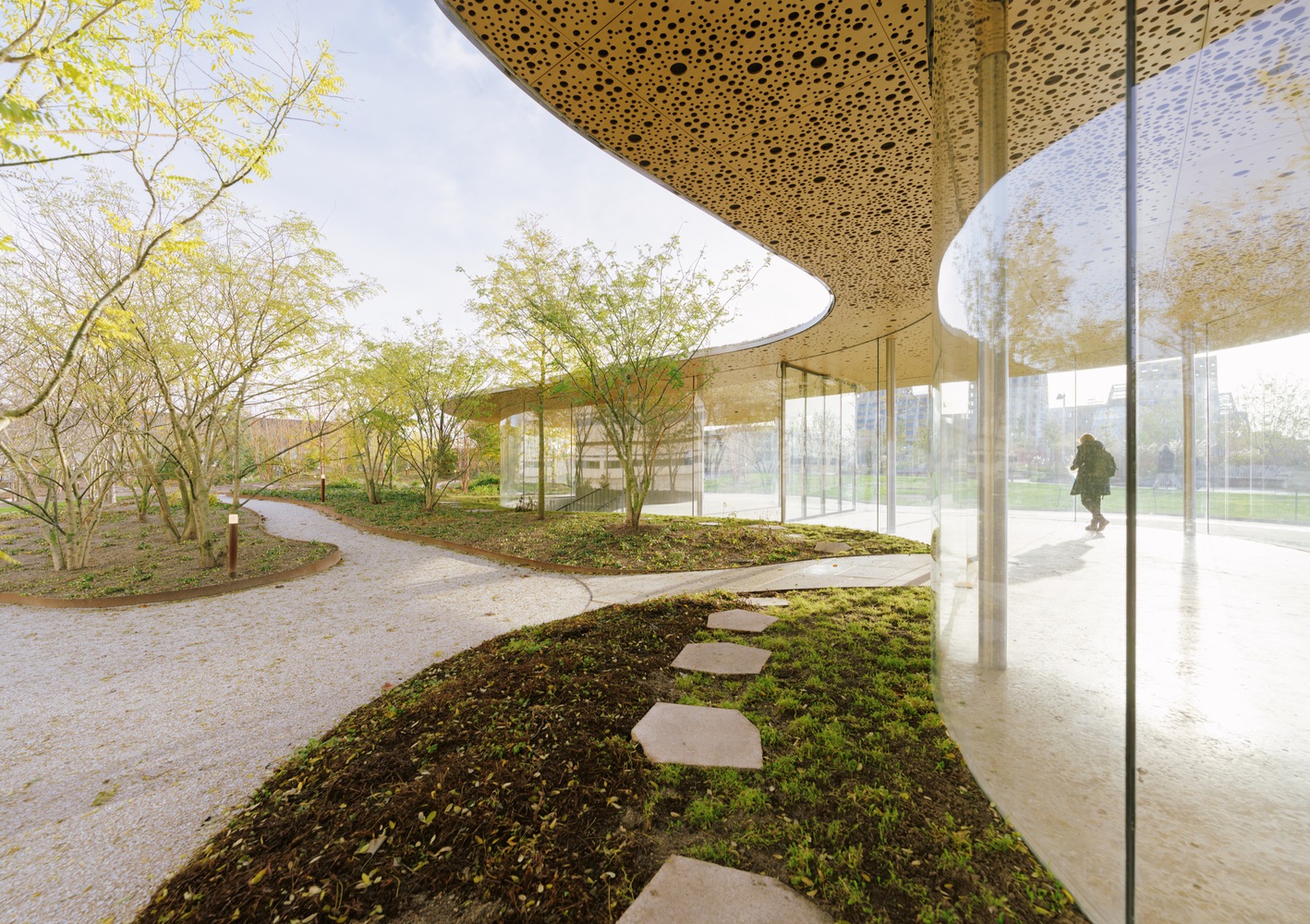
© Francisco Tirado
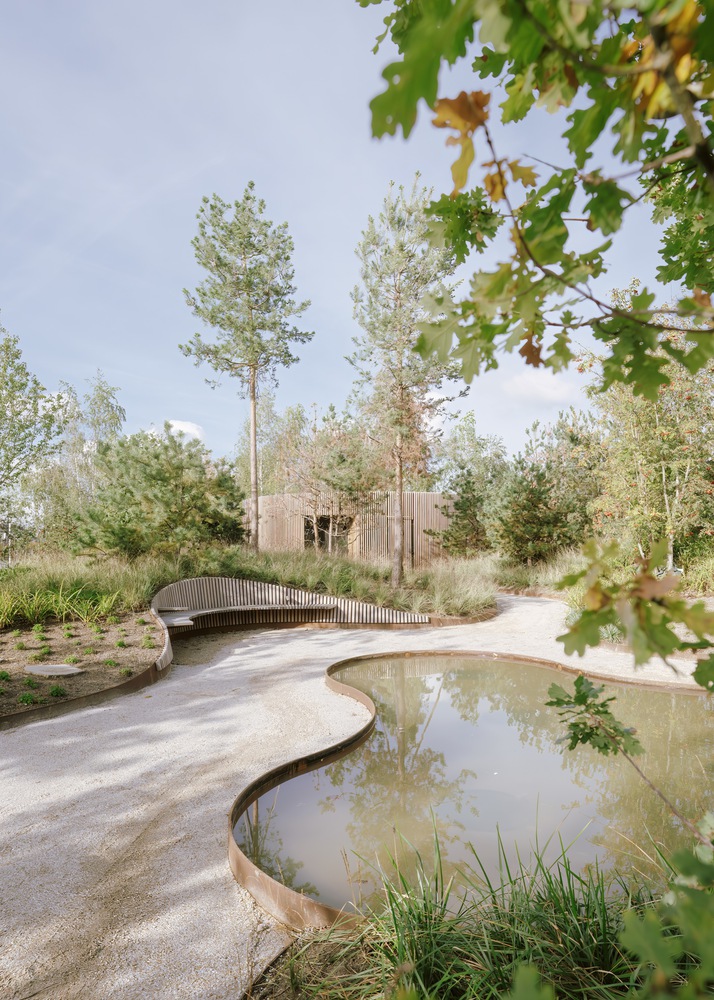
© Francisco Tirado
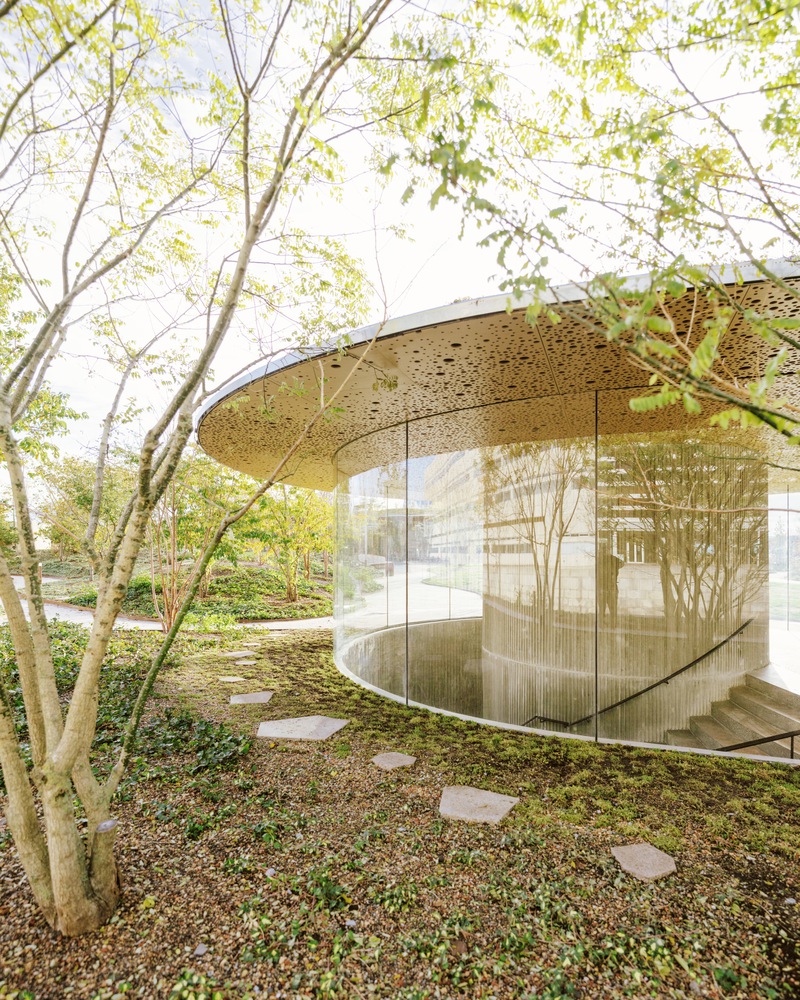
© Francisco Tirado
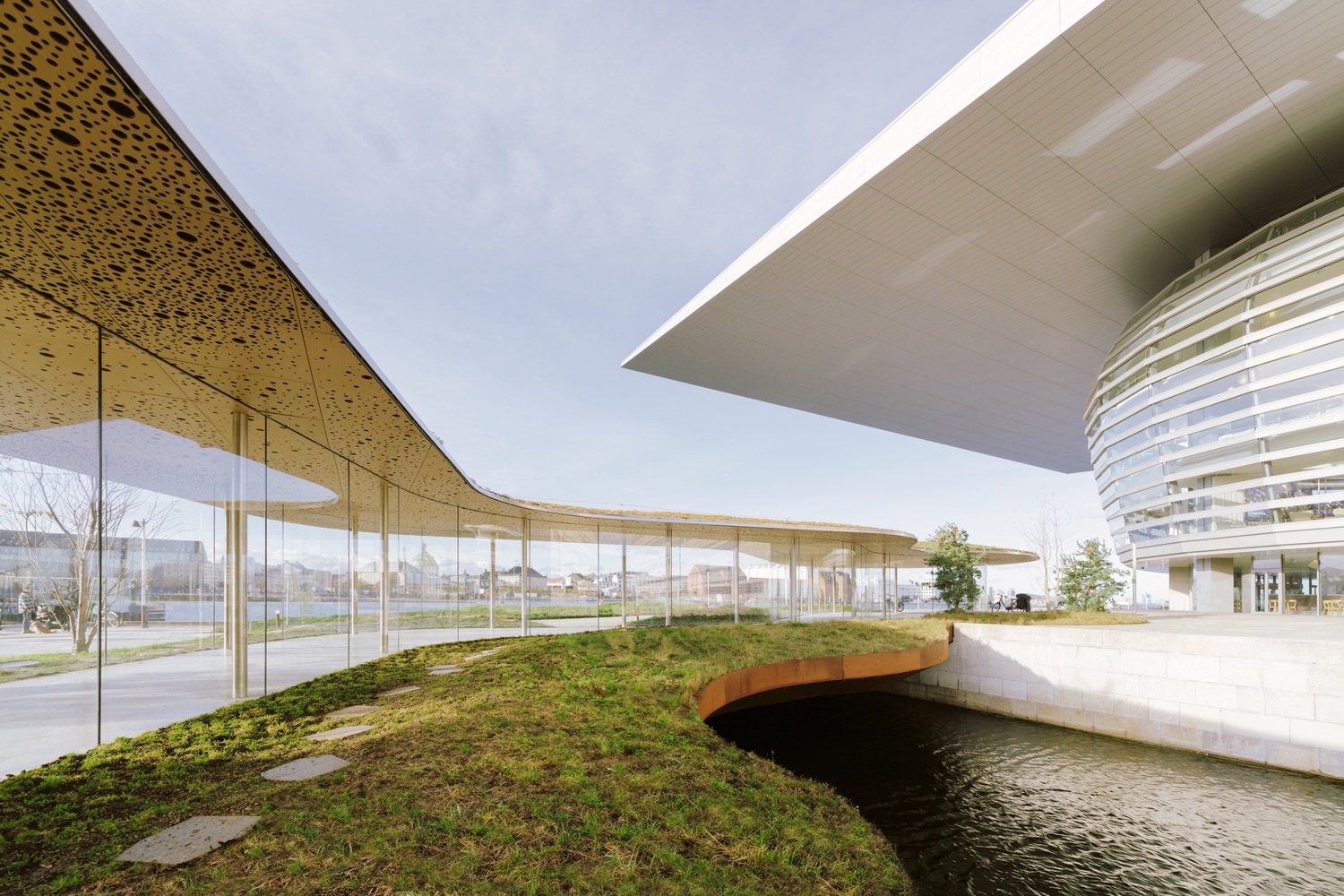
© Francisco Tirado
A greenhouse at the heart
In addition to the gardens, the park features a central greenhouse with a café, giving access to car parking underneath the park’s surface. The greenhouse is designed as an organically shaped glass structure with a hovering roof, intended to surprise and delight visitors as they navigate the lush landscape. The greenhouse and café will ensure that Opera Park remains a vibrant destination year-round, even during winter when many of Copenhagen’s parks are desolate. Inside, the greenhouse terraces down to the parking levels, which accommodate up to 300 cars, while its subtropic biotope also descends to vertically weave together the park with the underground levels.
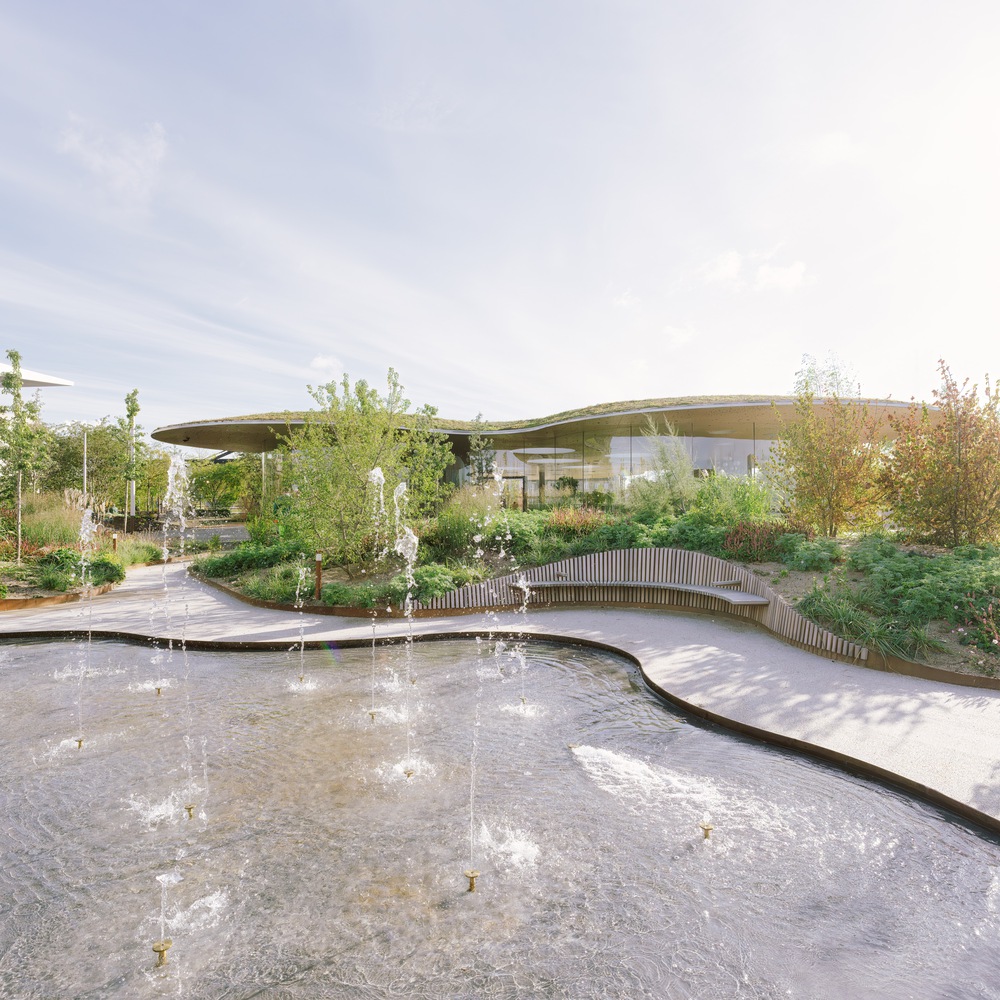
© Francisco Tirado
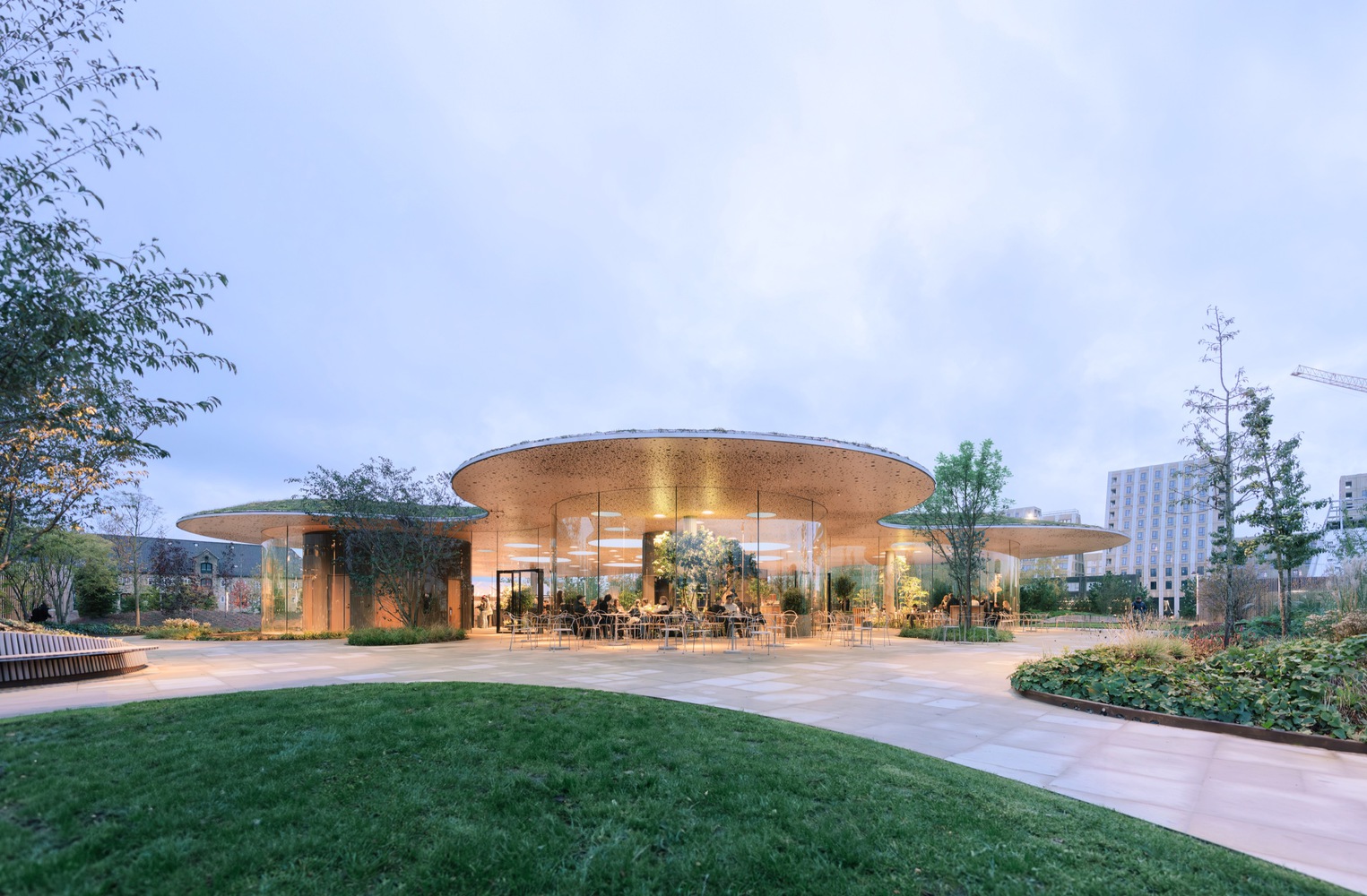
© Francisco Tirado
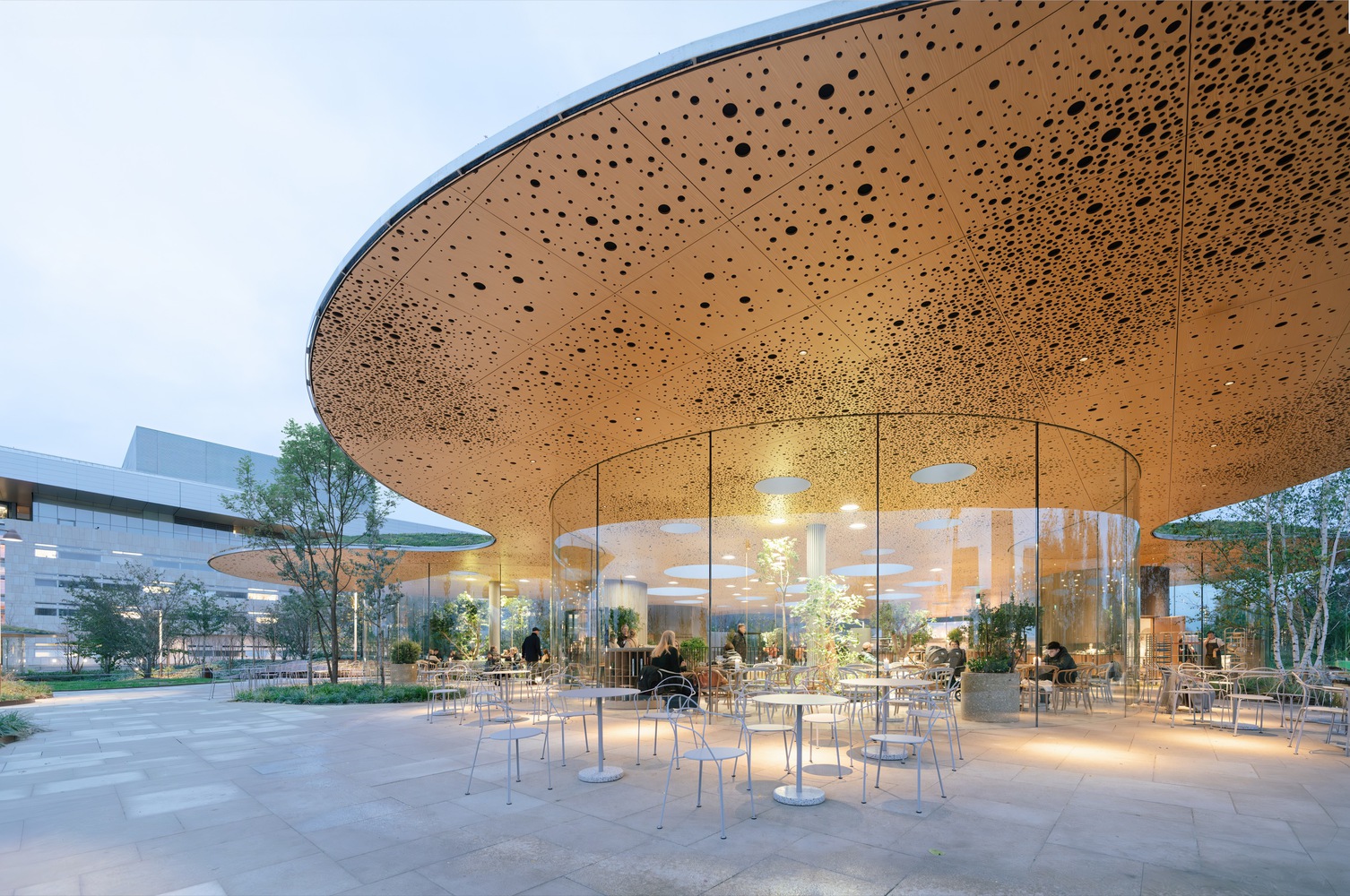
© Francisco Tirado
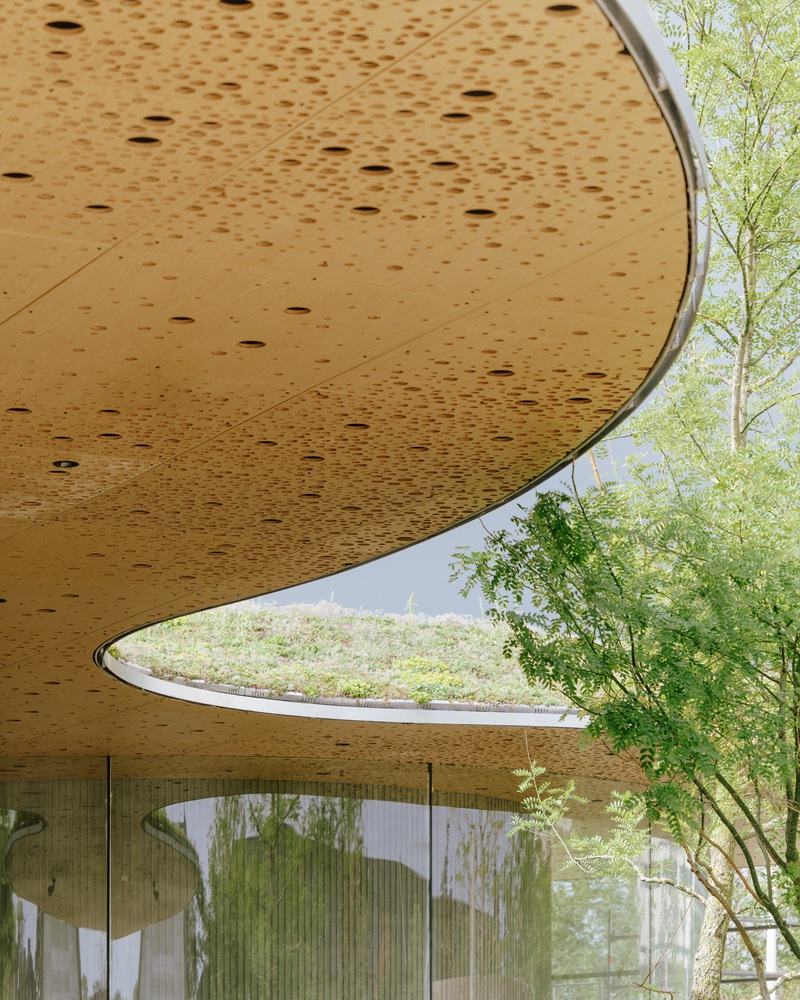
© Francisco Tirado
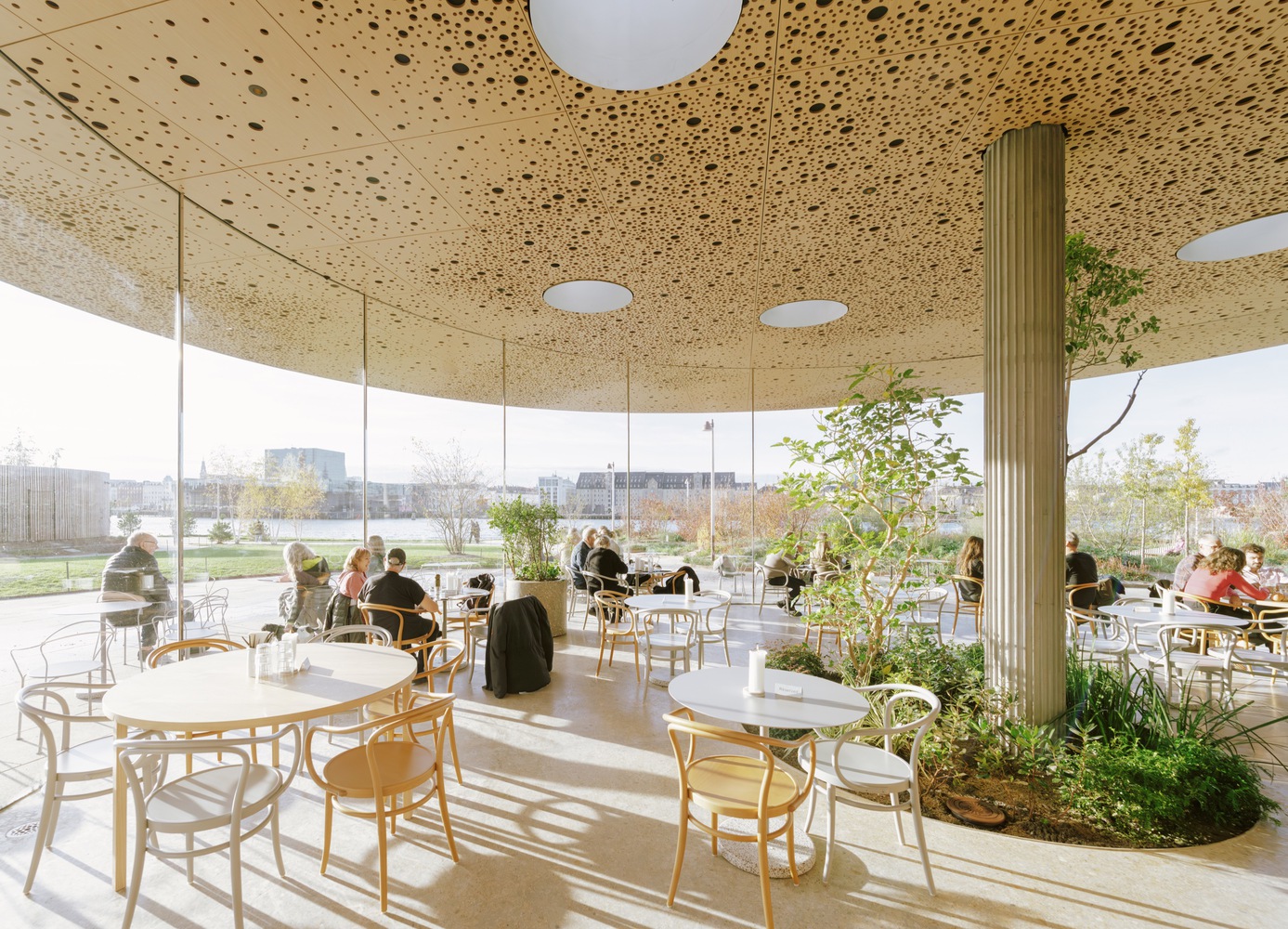
© Francisco Tirado
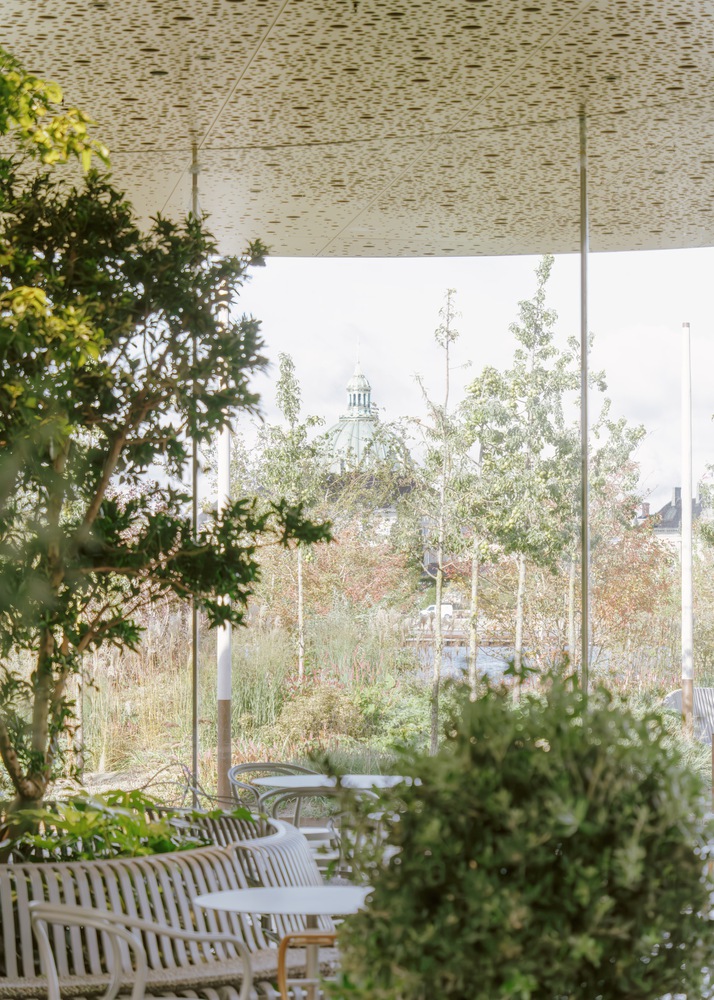
© Francisco Tirado
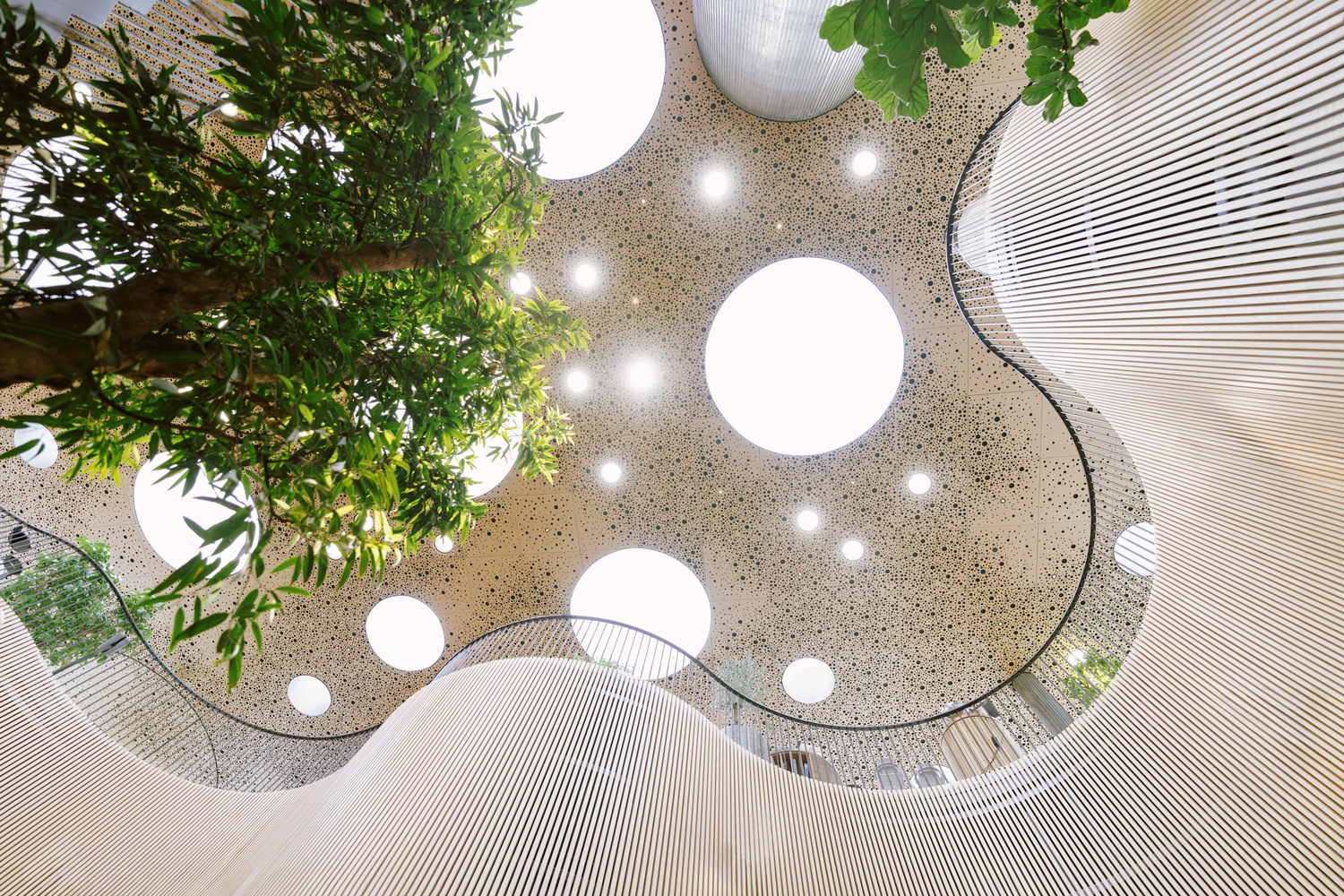
© Francisco Tirado
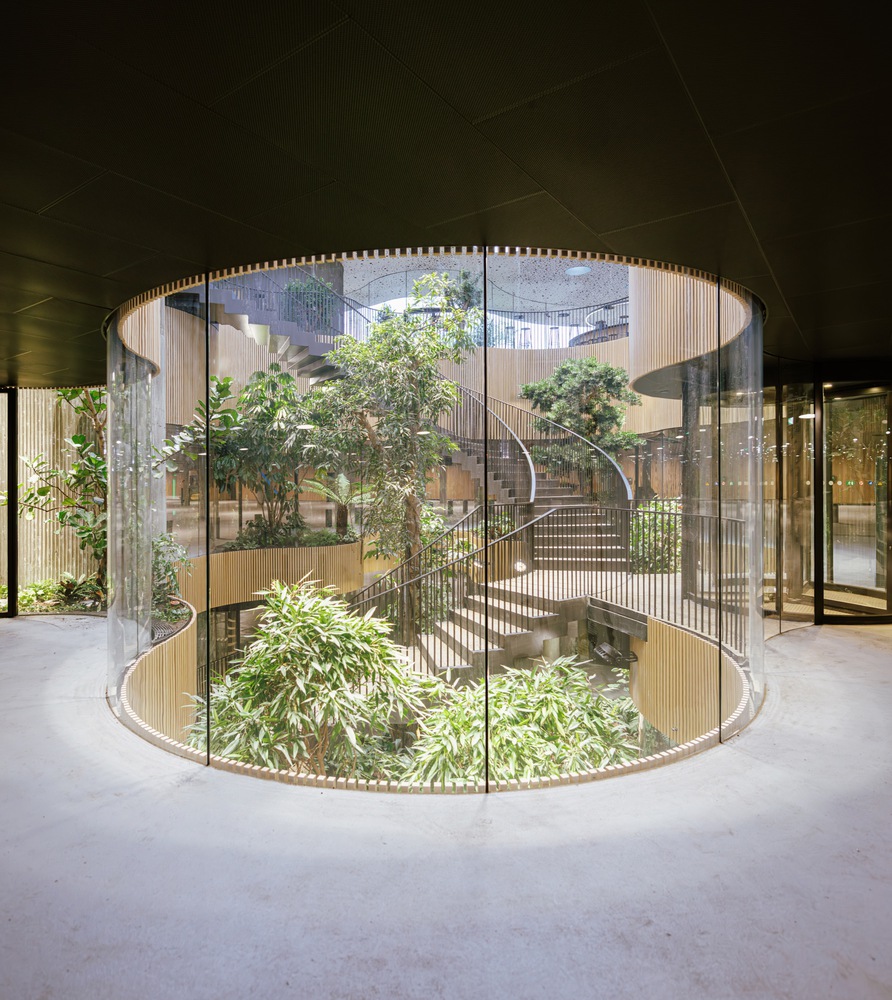
© Francisco Tirado
A covered connection to the Opera
The park also features a covered connection to the adjacent Royal Danish Opera via a covered walkway atop a landscaped bridge, allowing a weather-protected link between the parking facility and the Opera. Echoing the architecture of the greenhouse, the walkway’s curved glass and floating roof evoke the landscape design in its meandering path. As one of three bridges to the island, the connection is designed as a piece of nature crossing the harbor canal, fully integrating landscape and architecture into one.
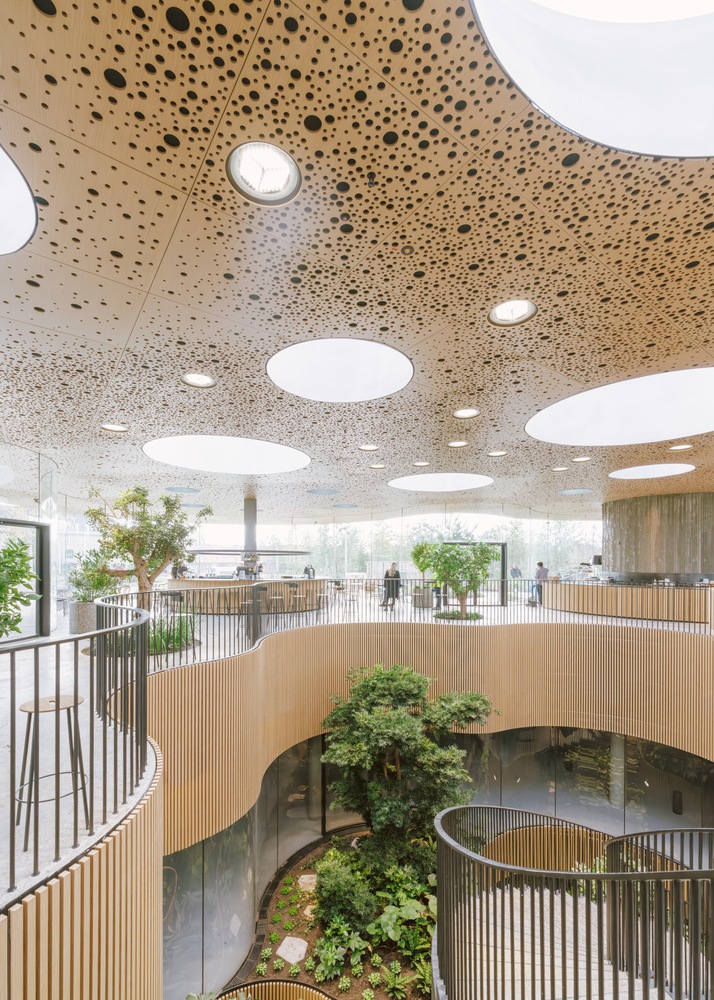
© Francisco Tirado
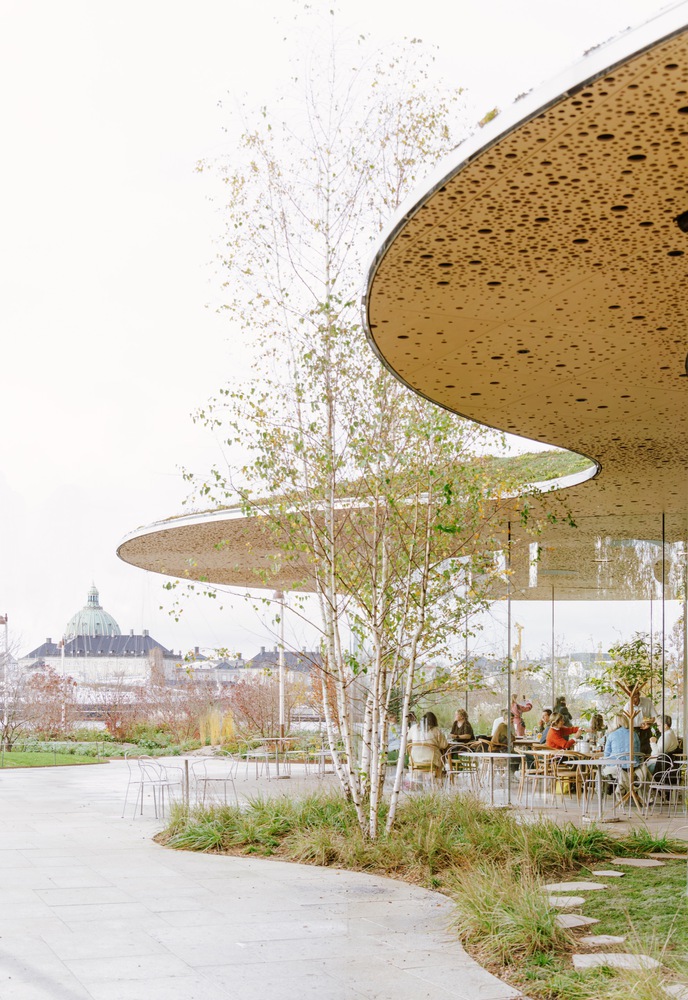
© Francisco Tirado
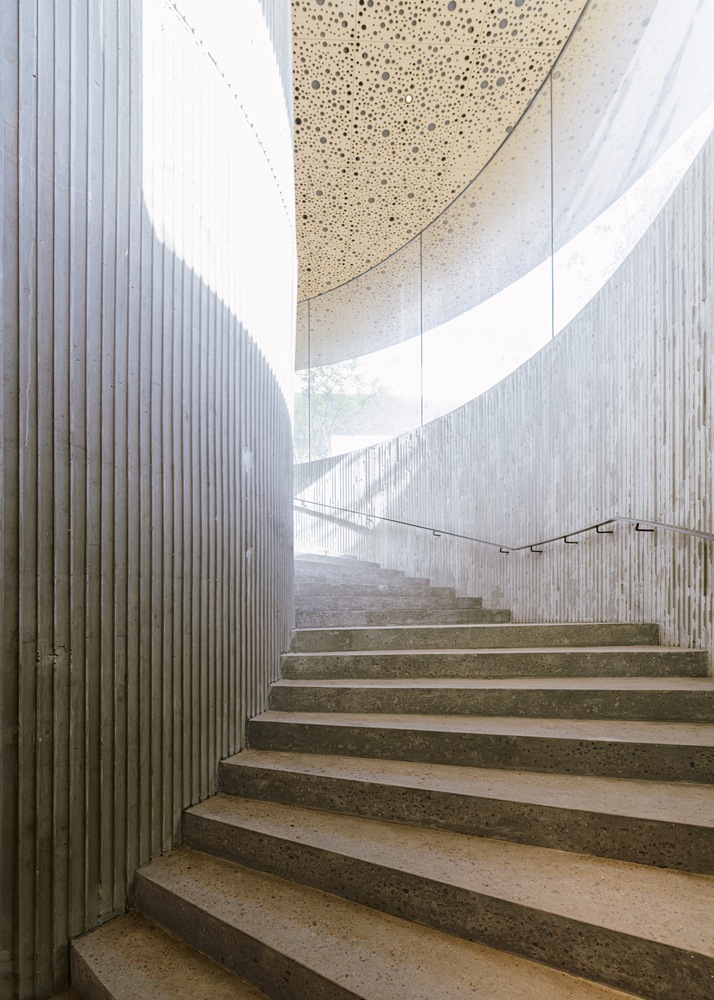
© Francisco Tirado
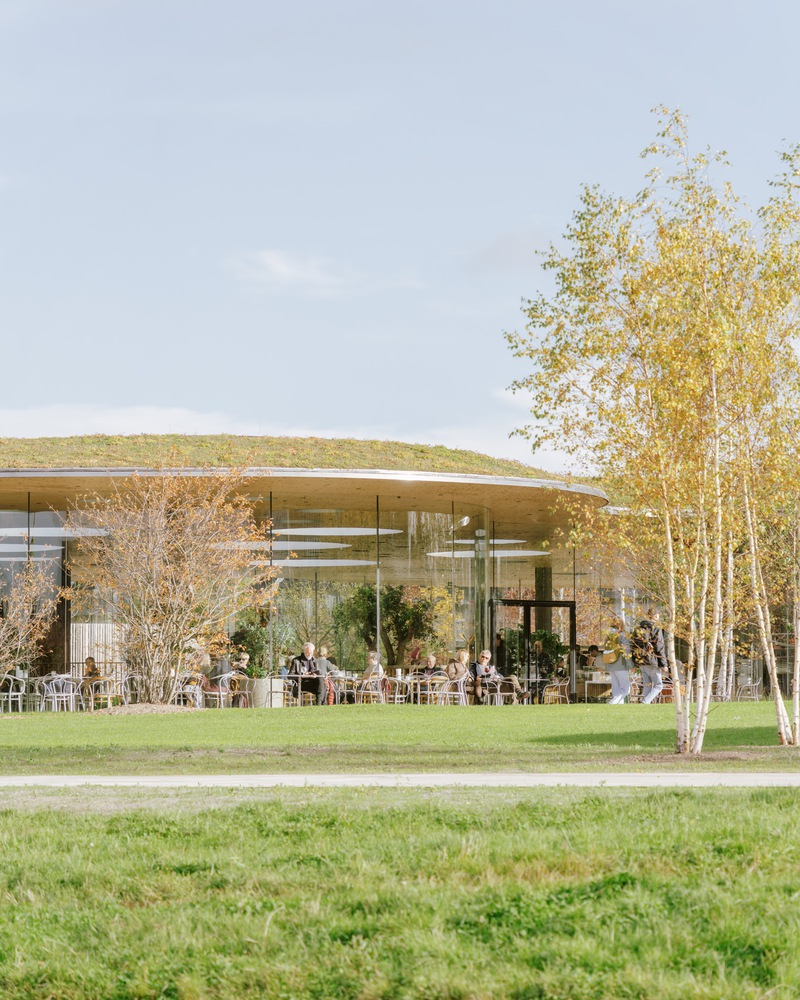
© Francisco Tirado
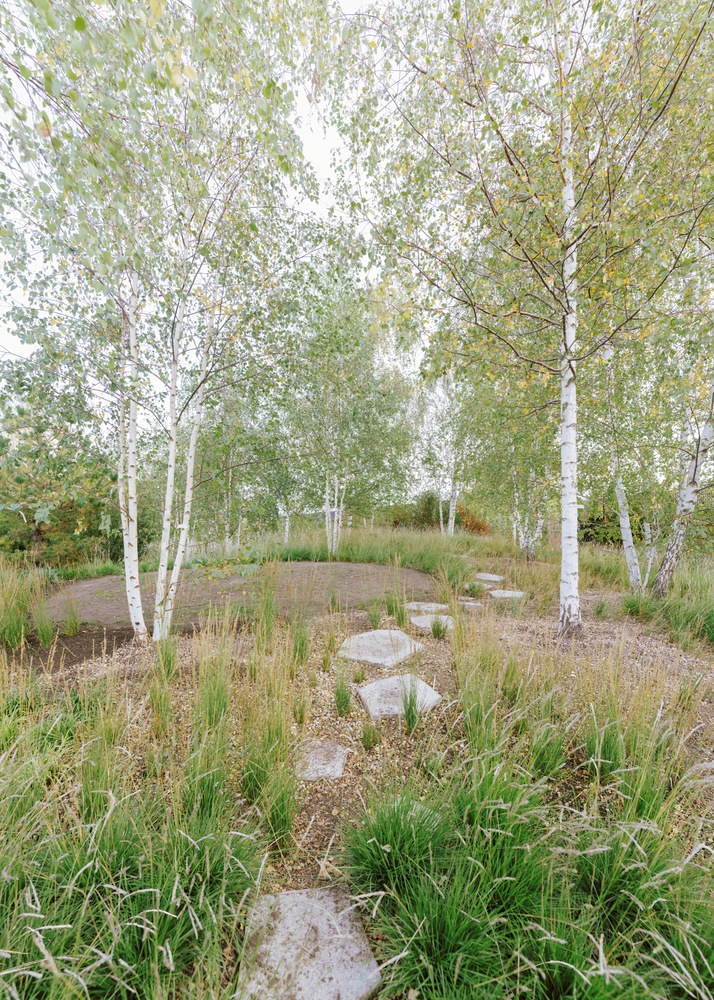
© Francisco Tirado
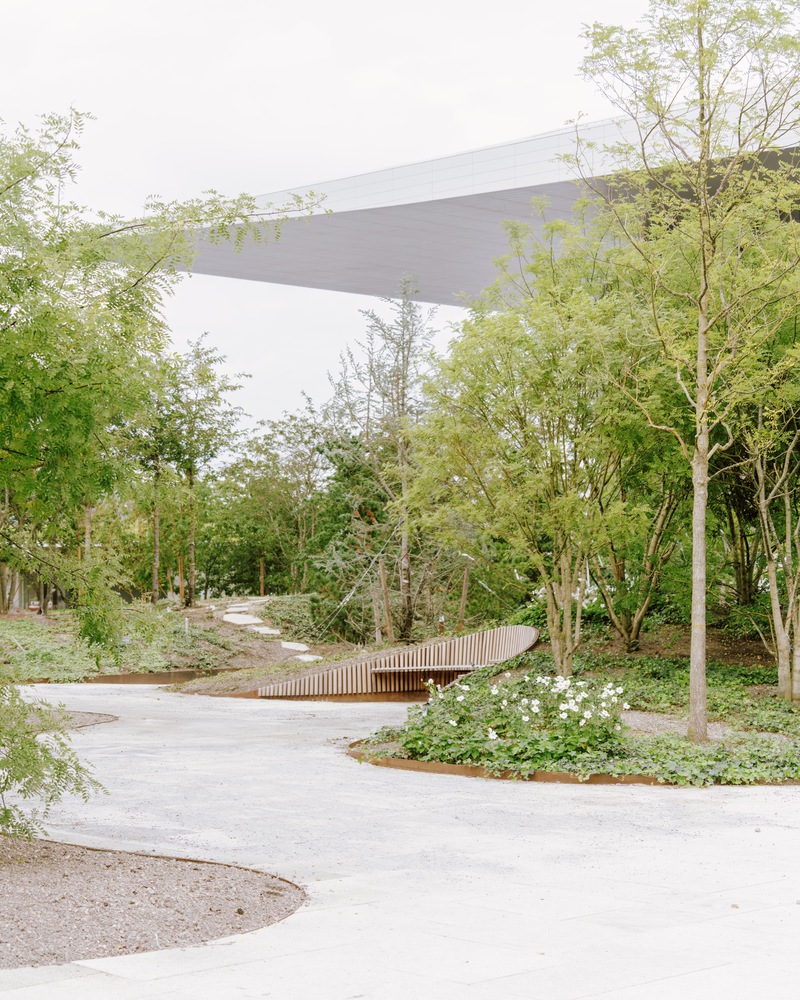
© Francisco Tirado
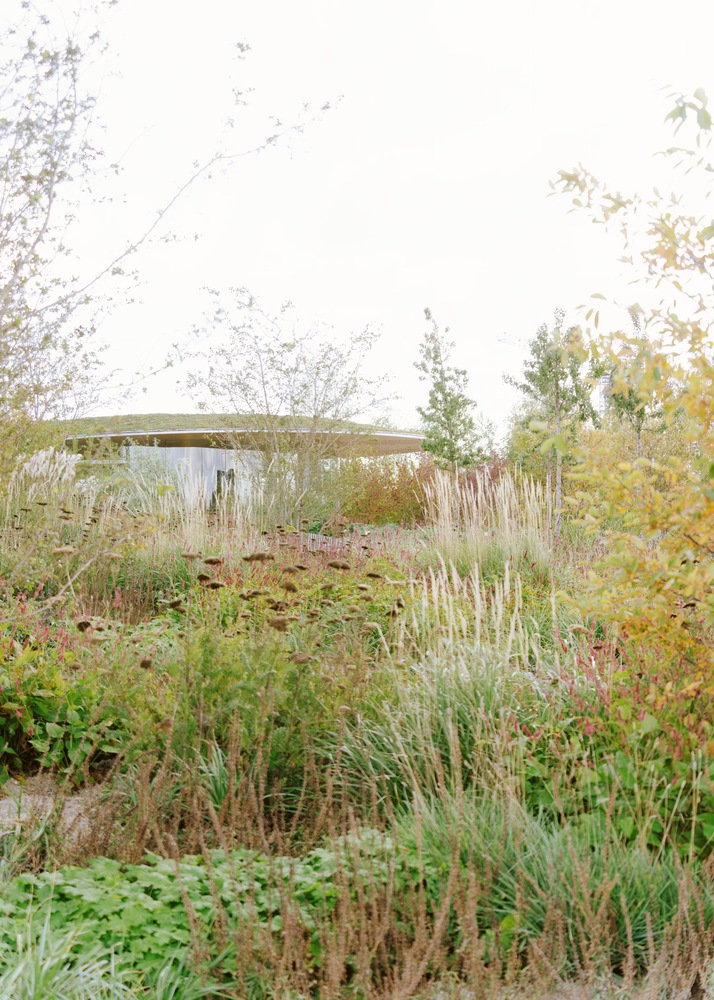
© Francisco Tirado
Benefitting from rain and sun
Rainwater is considered a valuable resource for the park, channeled from the roof of the Royal Danish Opera into underground water reservoirs used for greenhouse irrigation. Pathways are designed with a permeable gravel surface, and excess rainwater is collected in rain beds for infiltration and evaporation. The green roofs of the landscaped bridge and greenhouse capture and delay the release of rainwater to the site while also serving as a food source for the park’s fauna. Solar panels on the Opera’s roof provide power to the underground parking facility, the park, and the greenhouse. The park’s chosen materials are robust and fully recyclable, while the abundance of trees and plantings shield against strong winds coming from the harbor and the sea, reducing turbulence and increasing the level of comfort for park users. Furthermore, the elevated terrain safeguards the island from flooding during heavy rainfall and significant rises in the harbor water level.
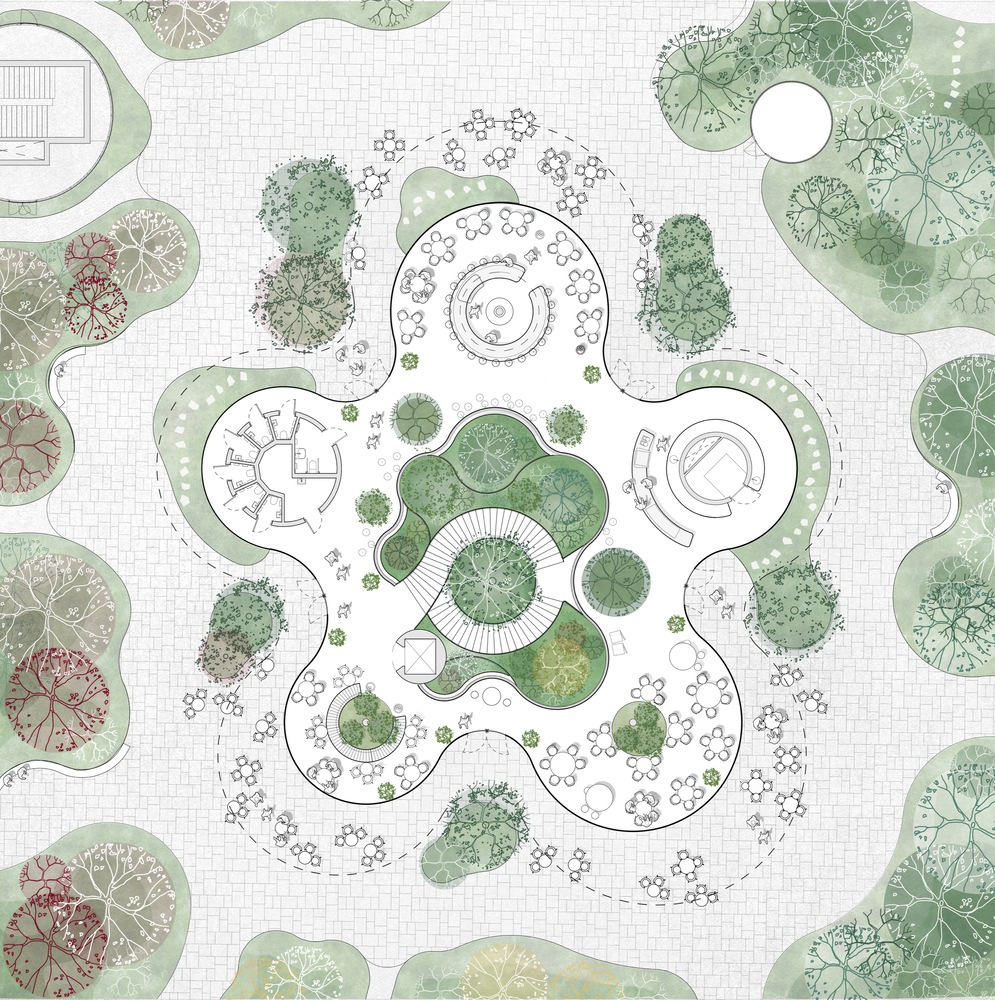
© COBE
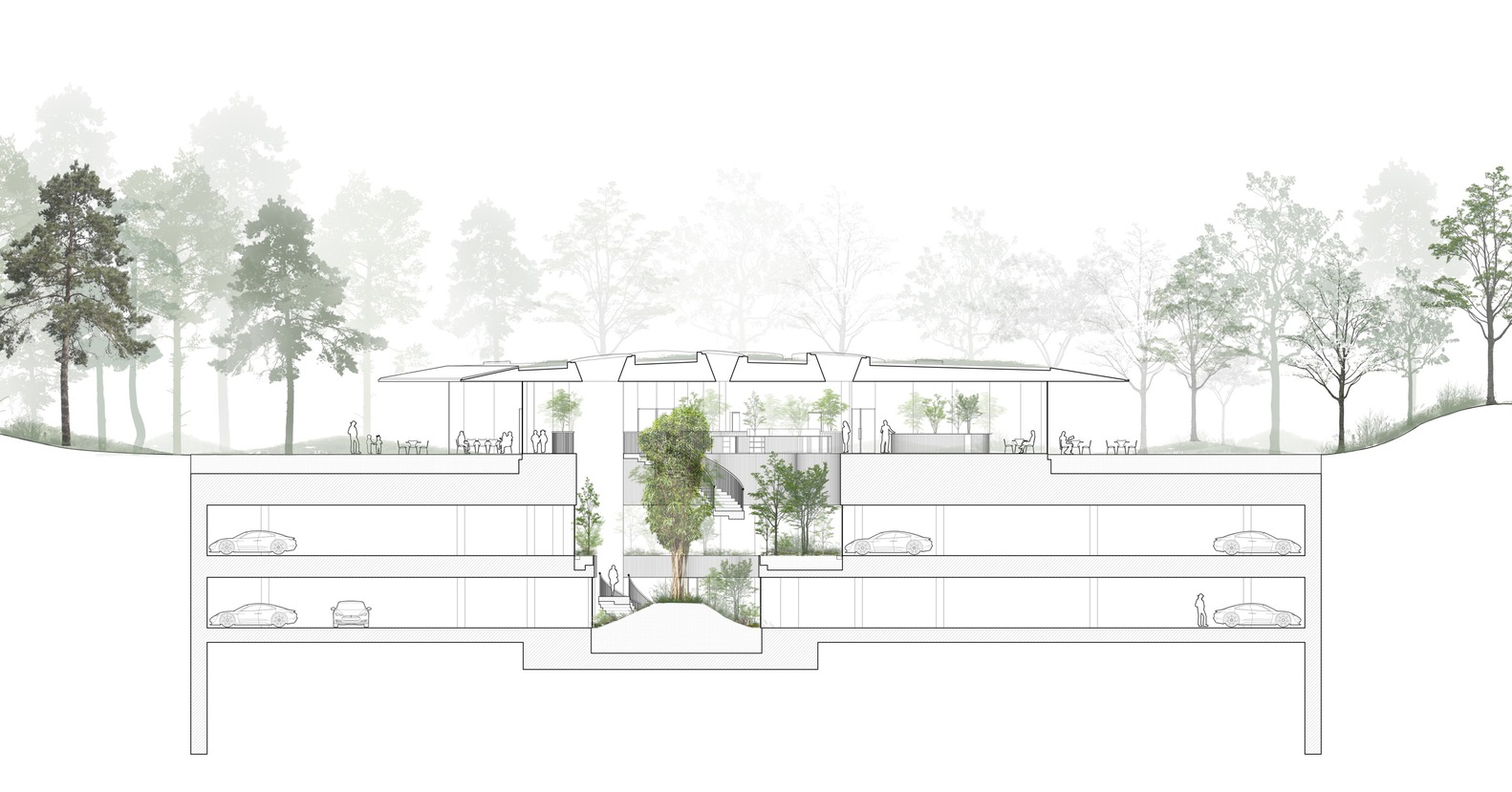
© COBE
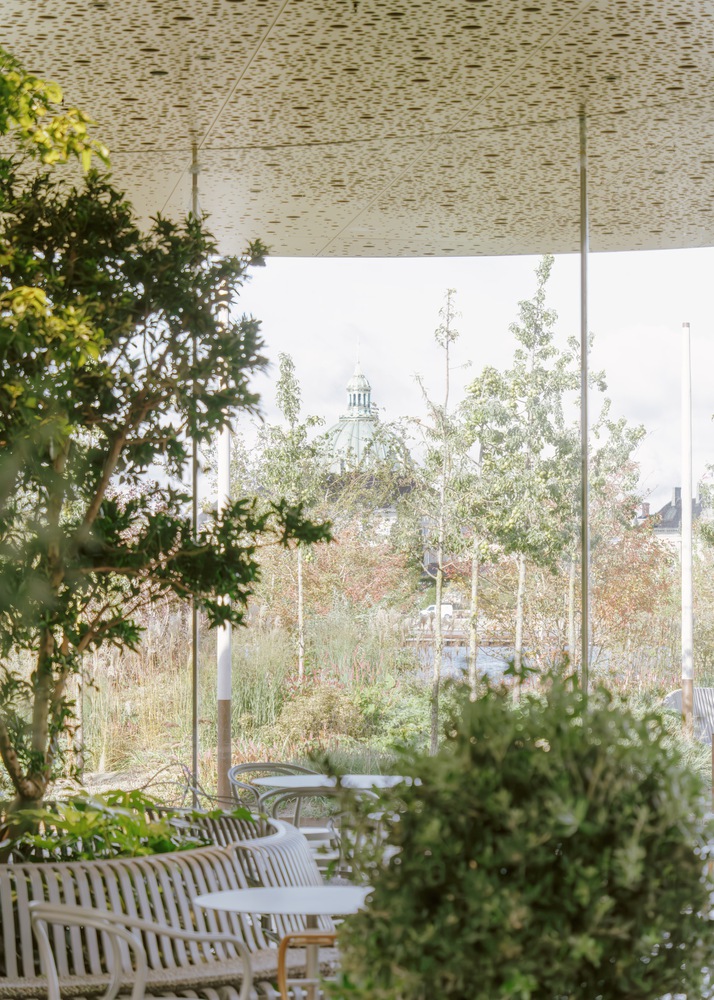
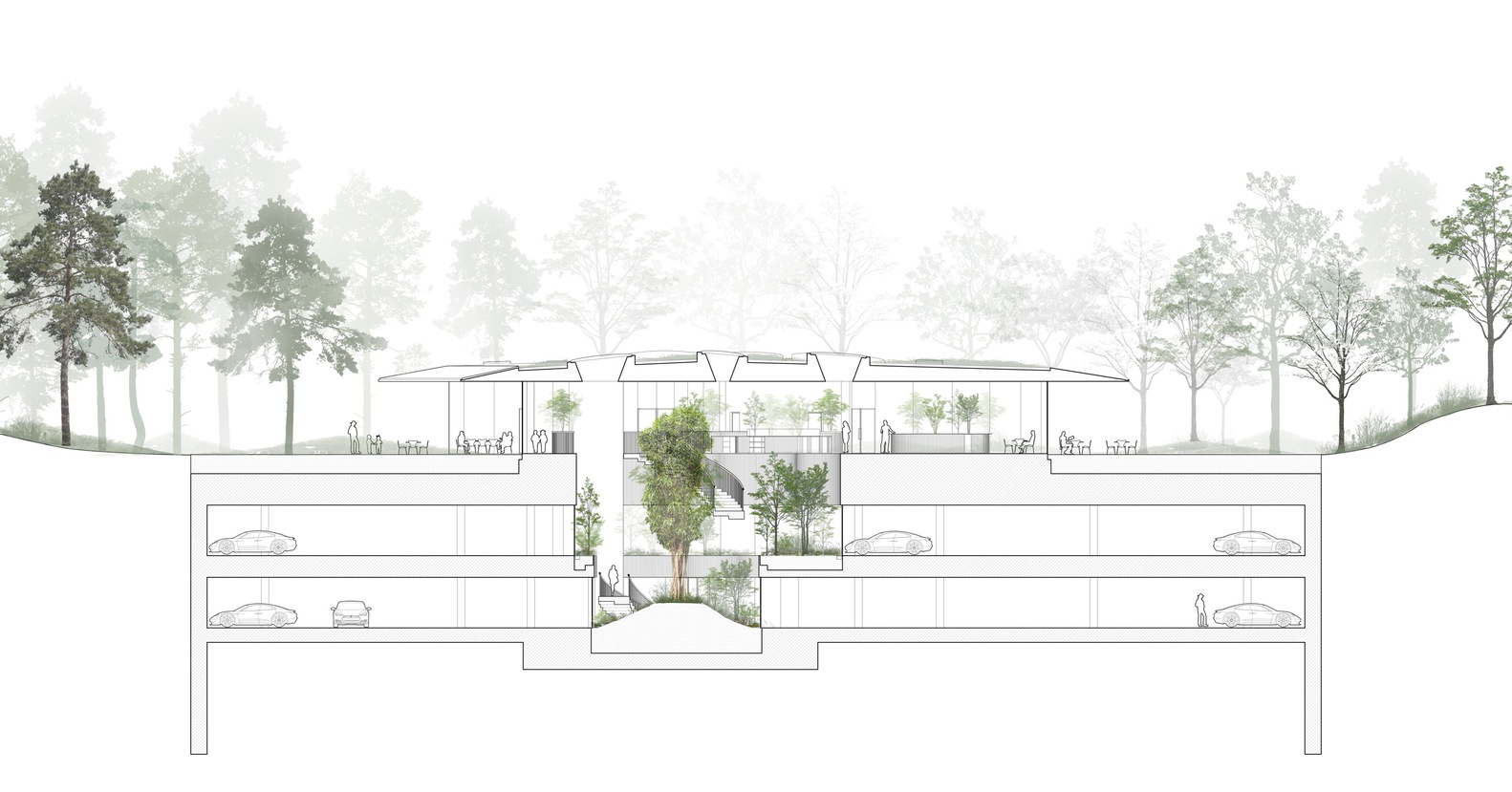
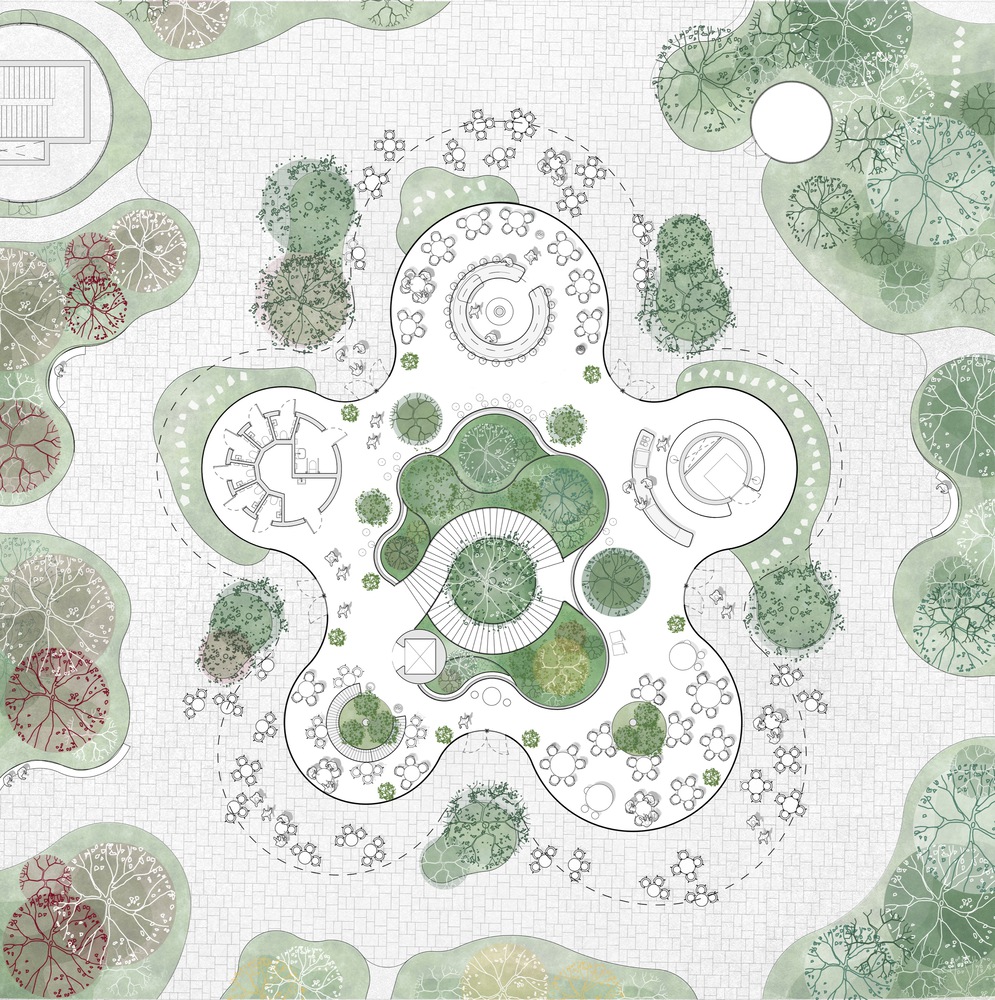
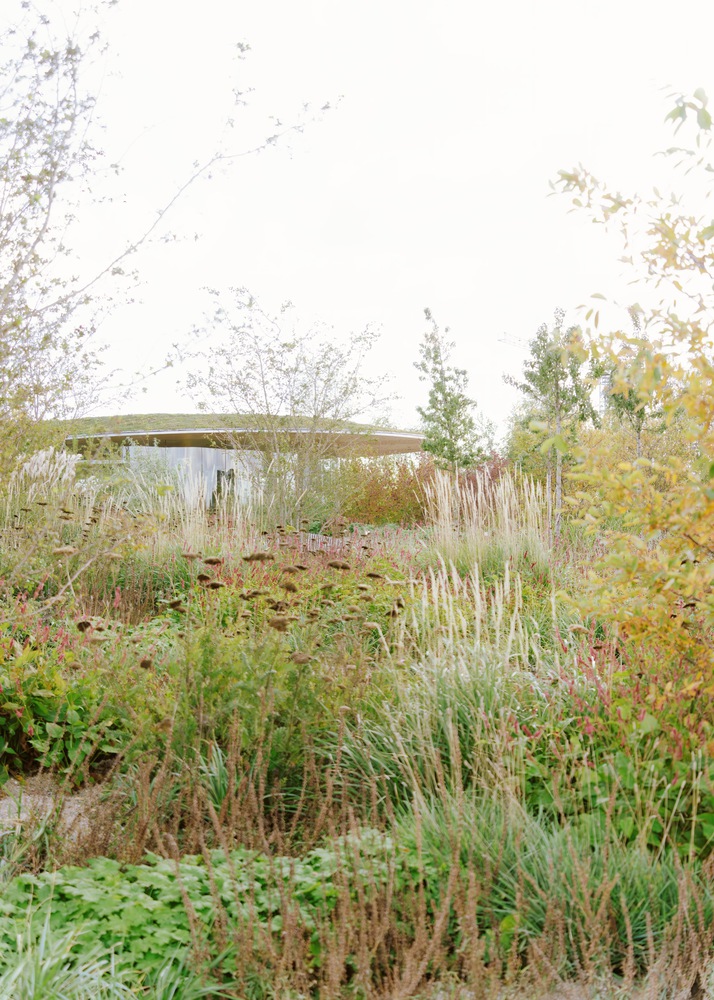

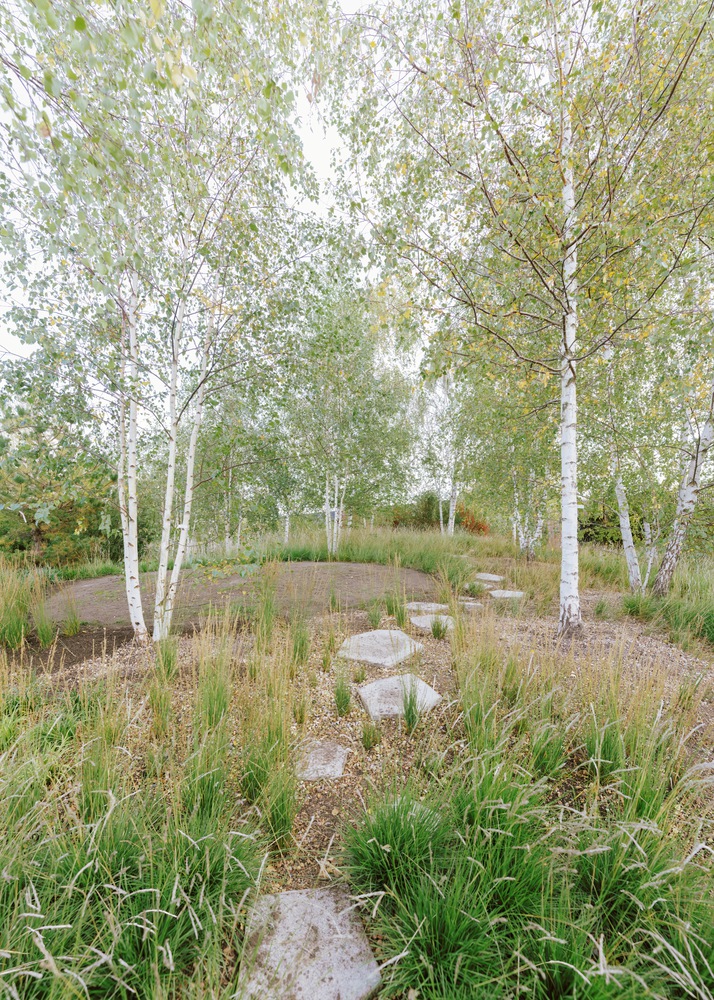
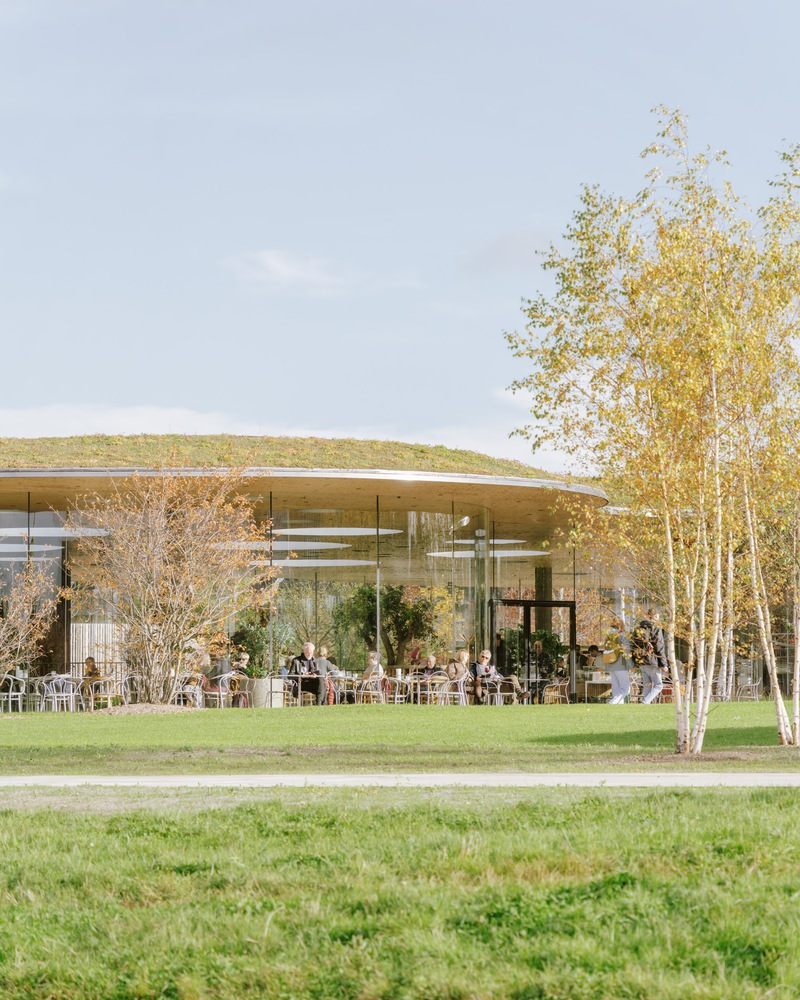
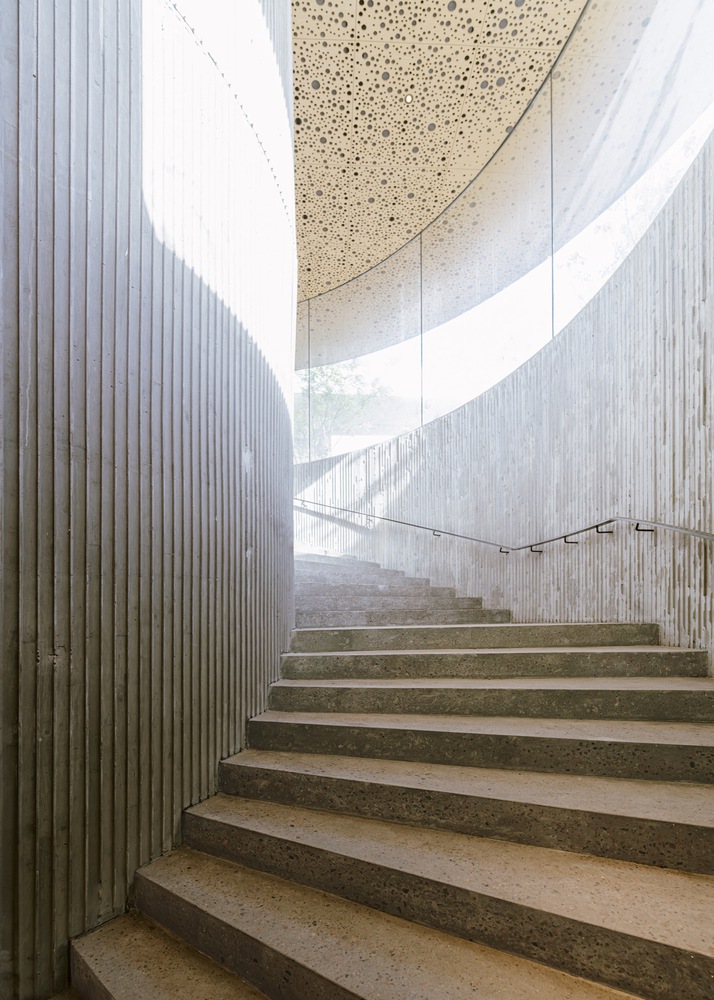
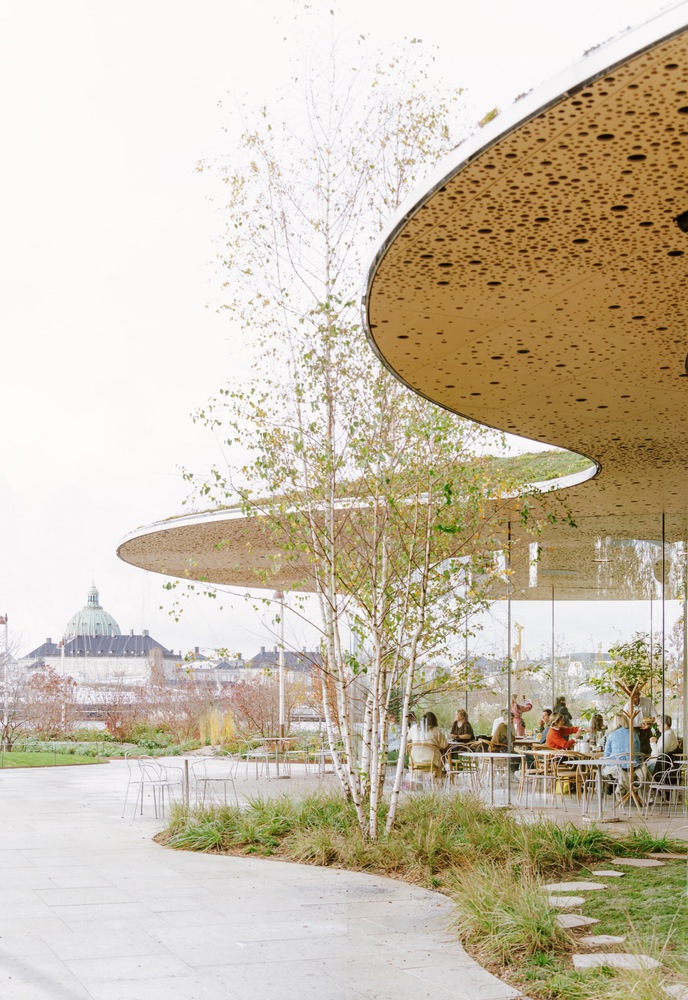
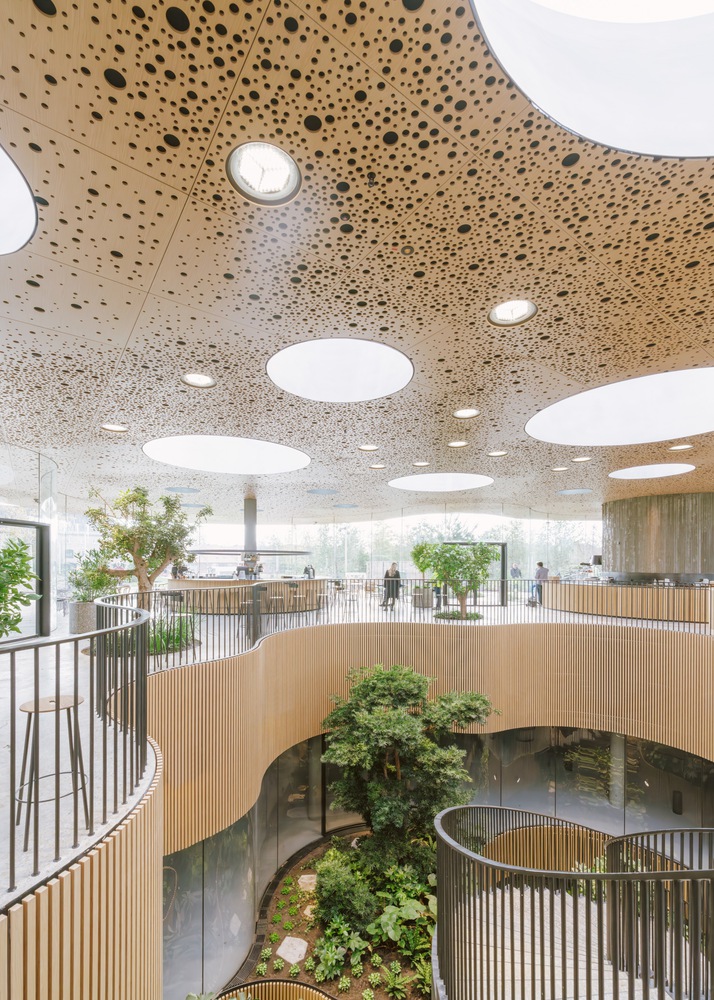
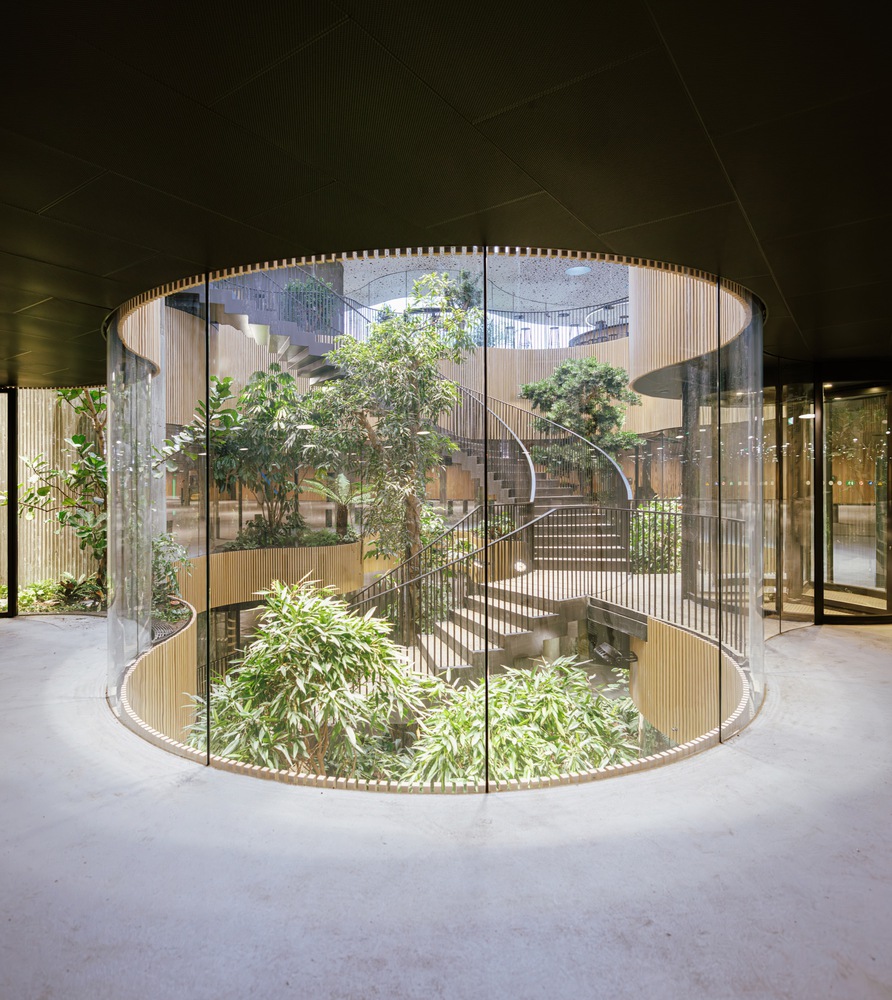
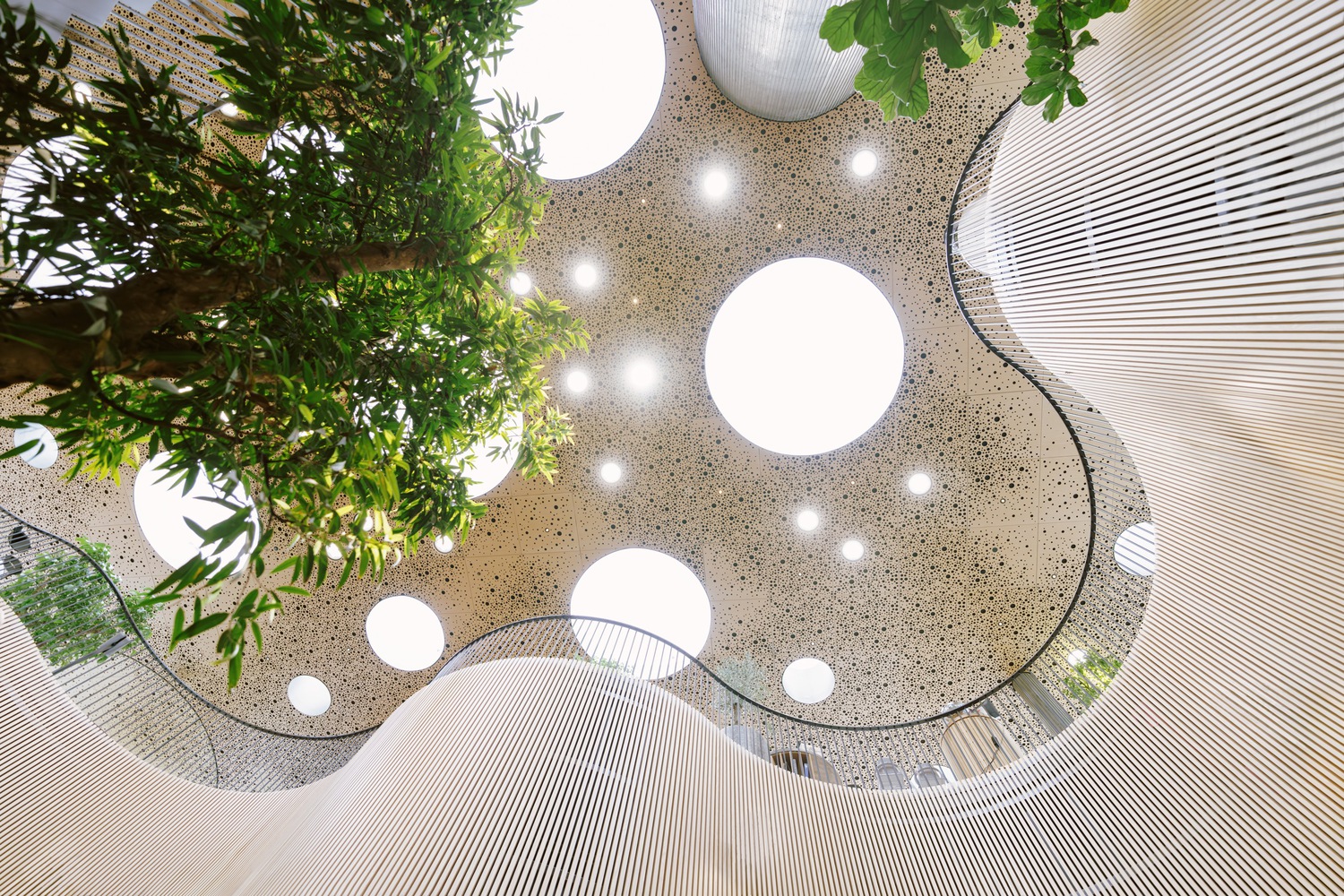
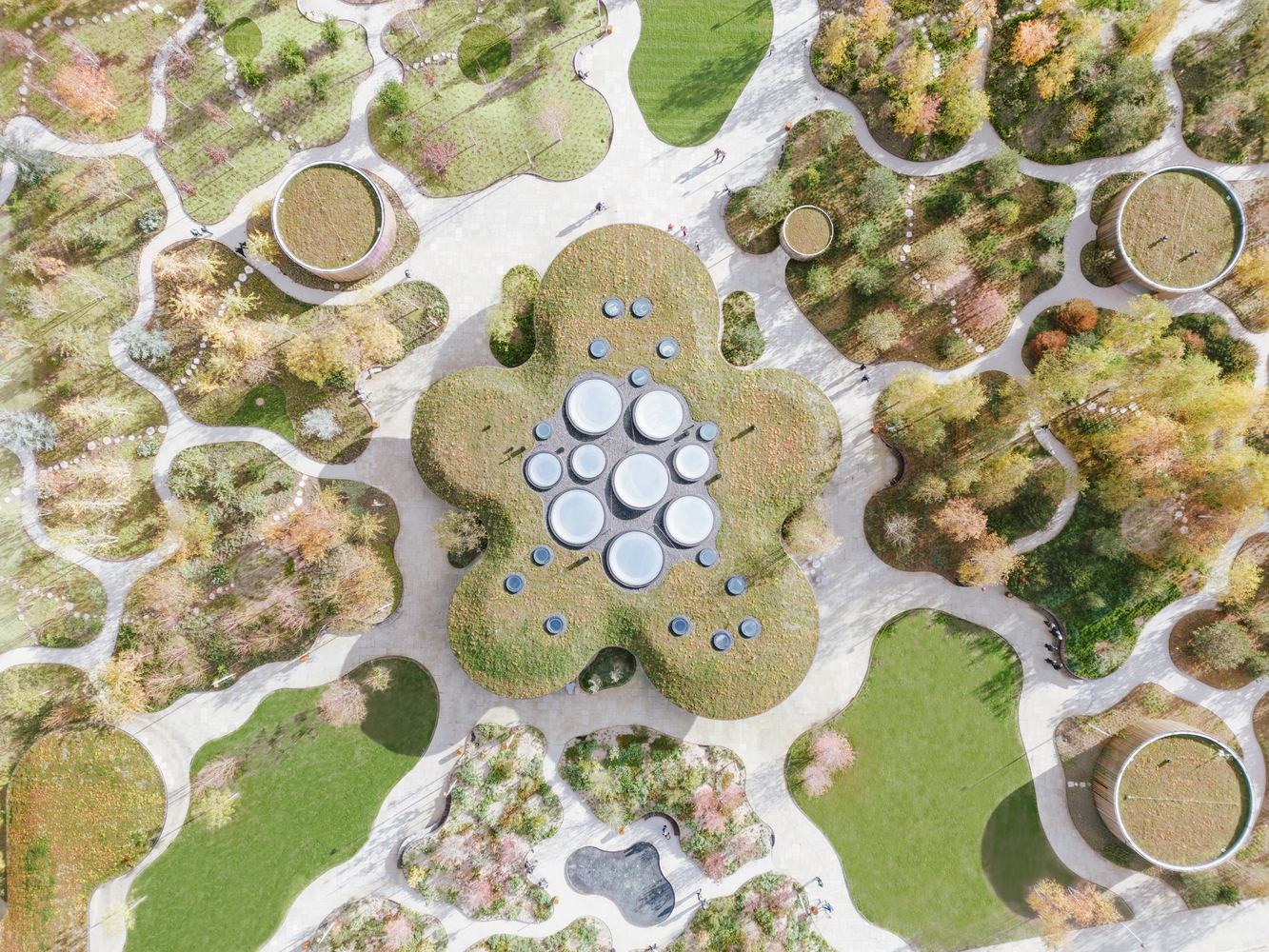
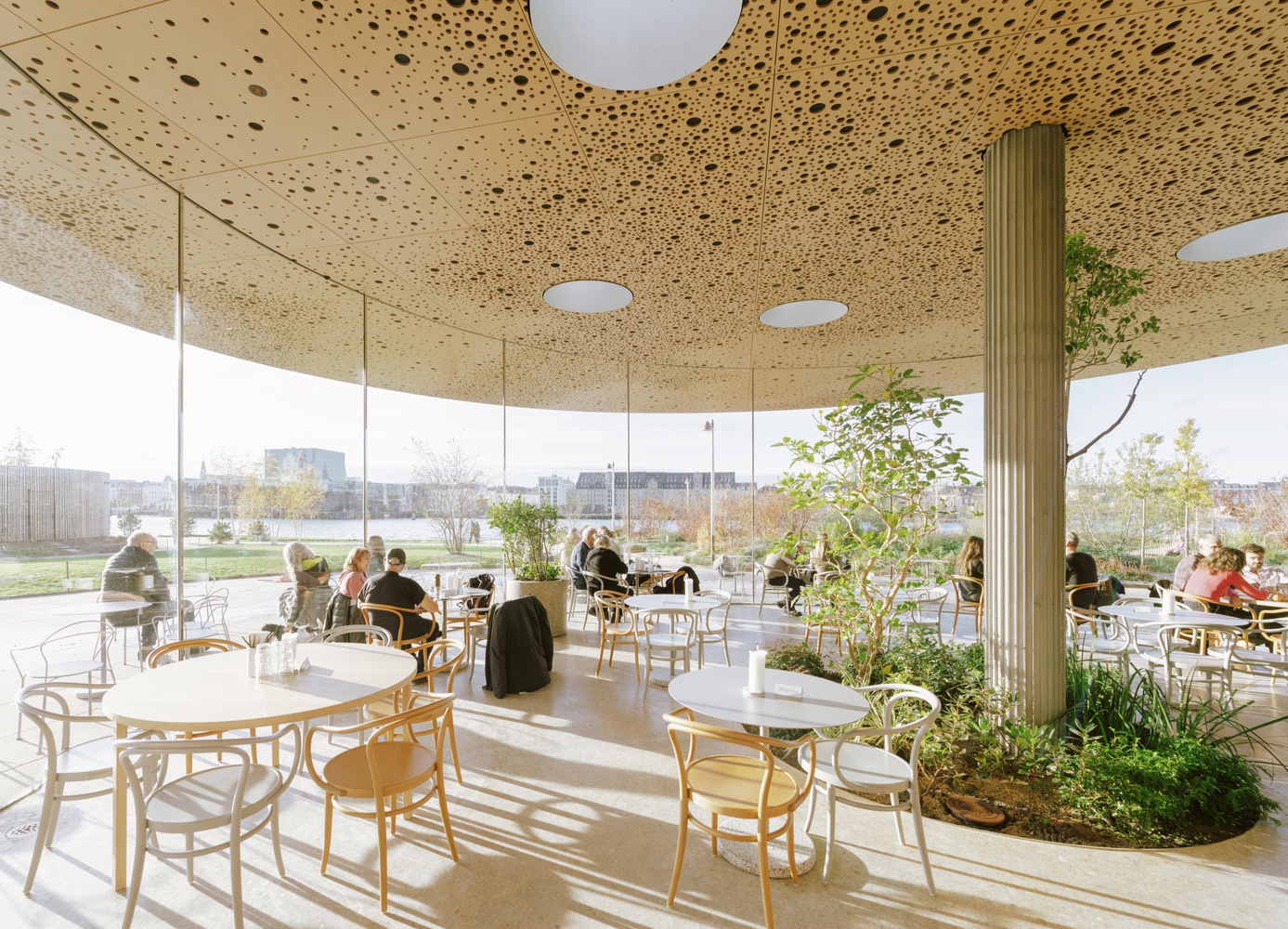
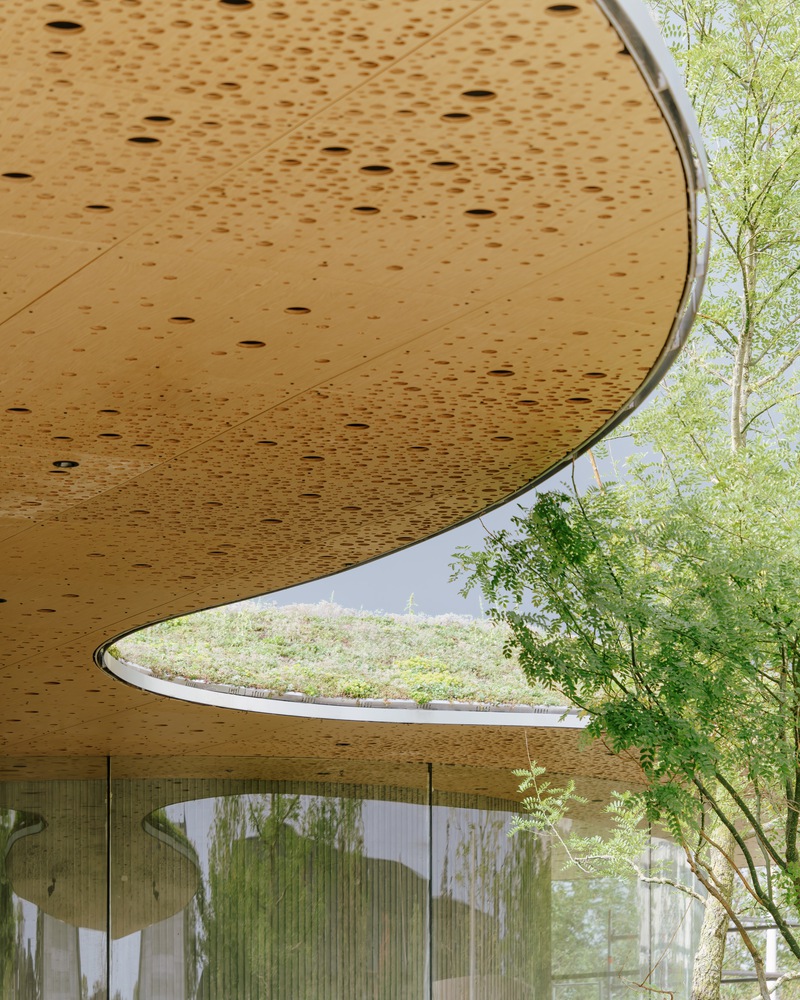
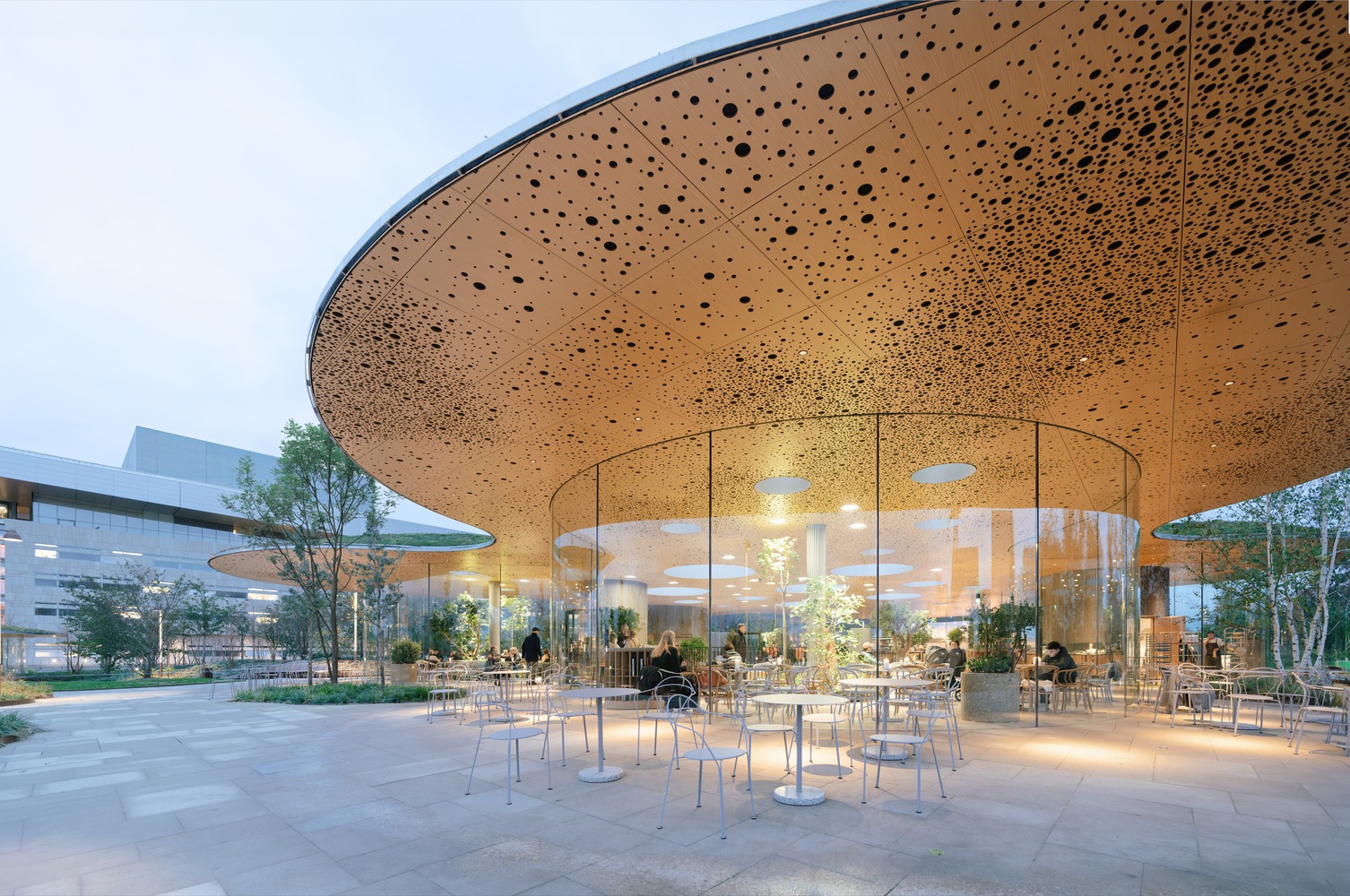
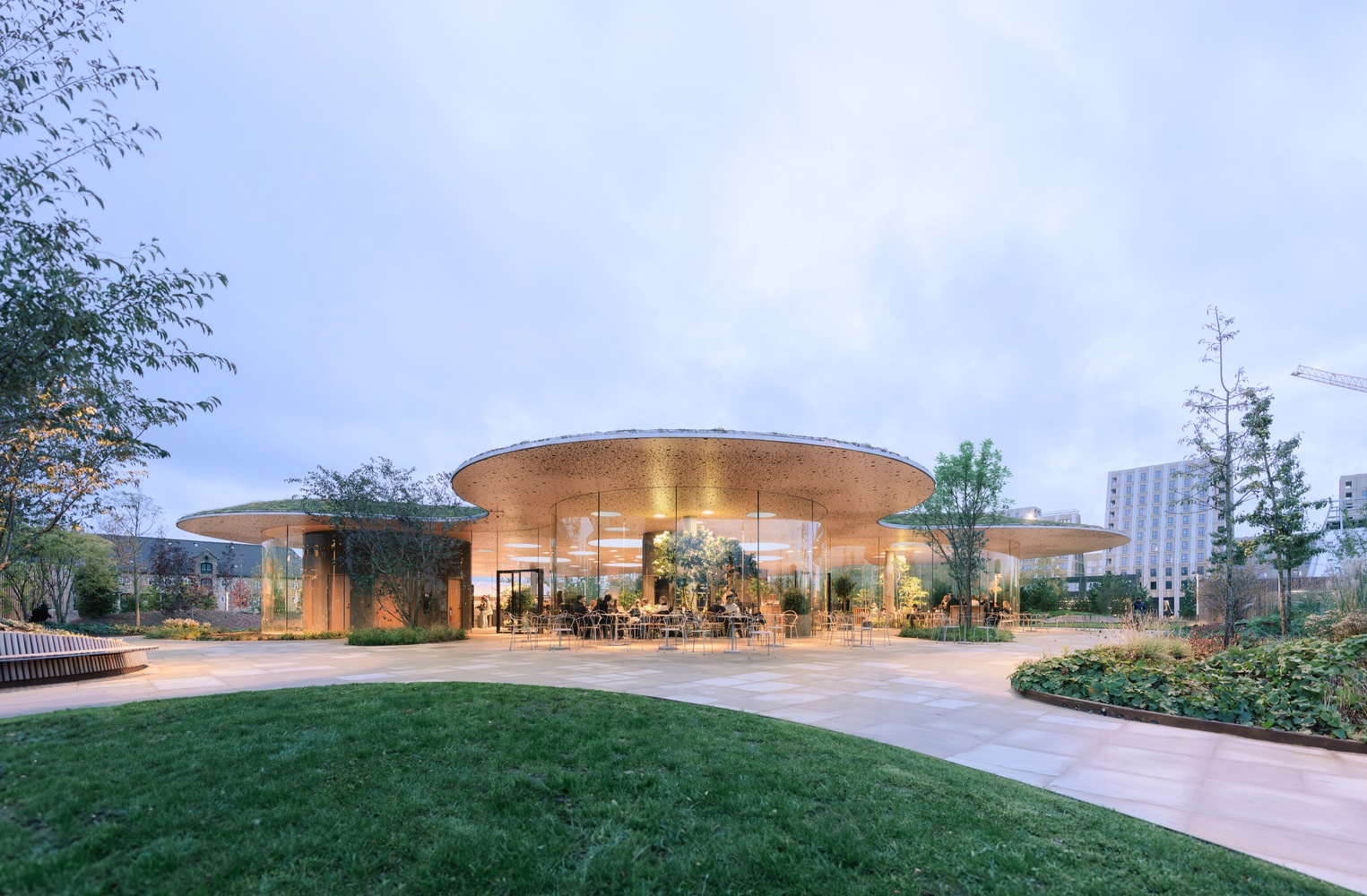
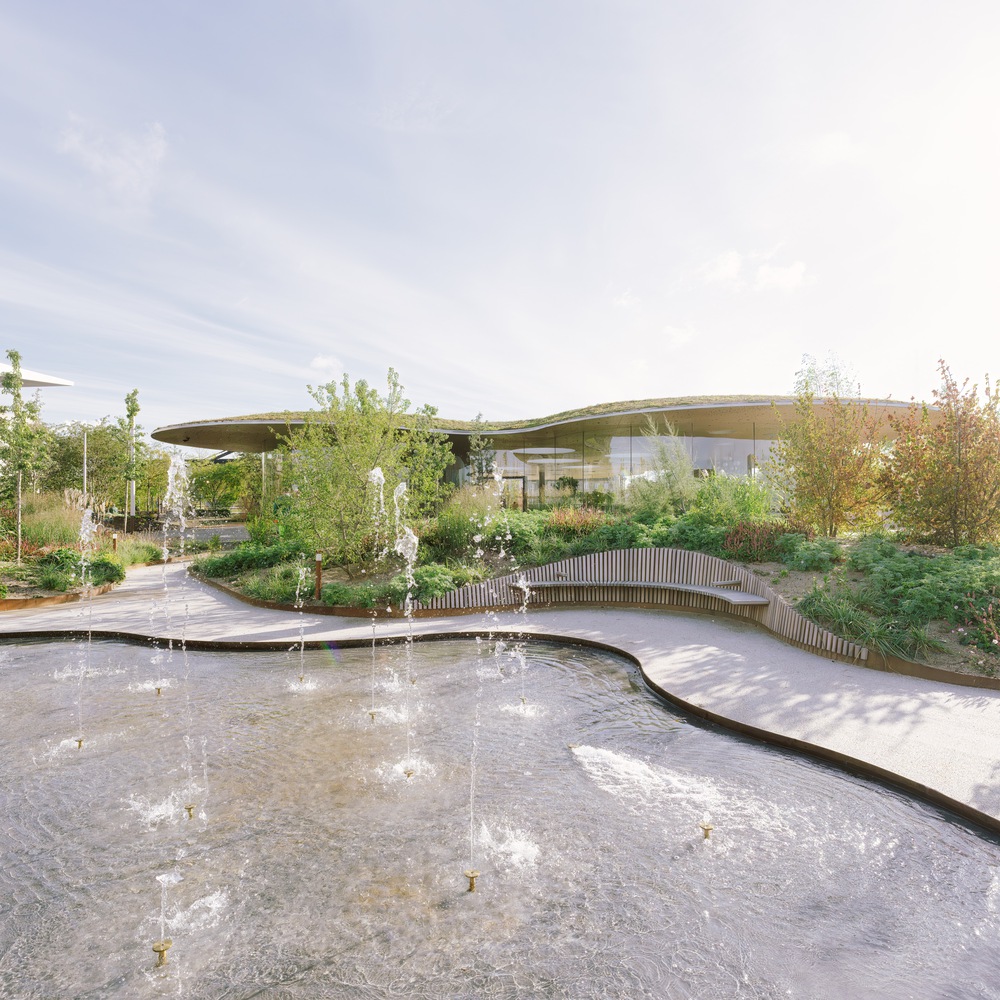
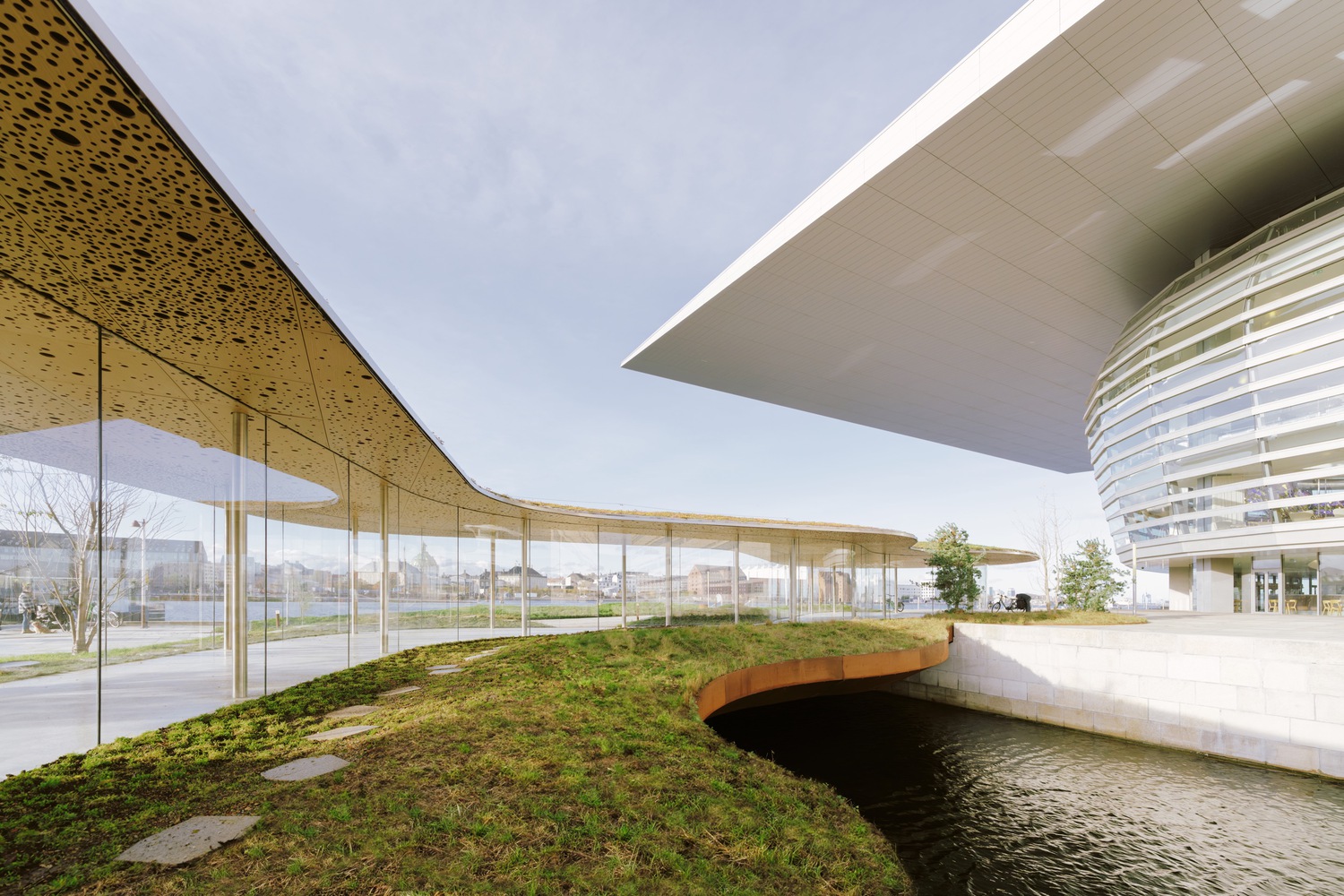
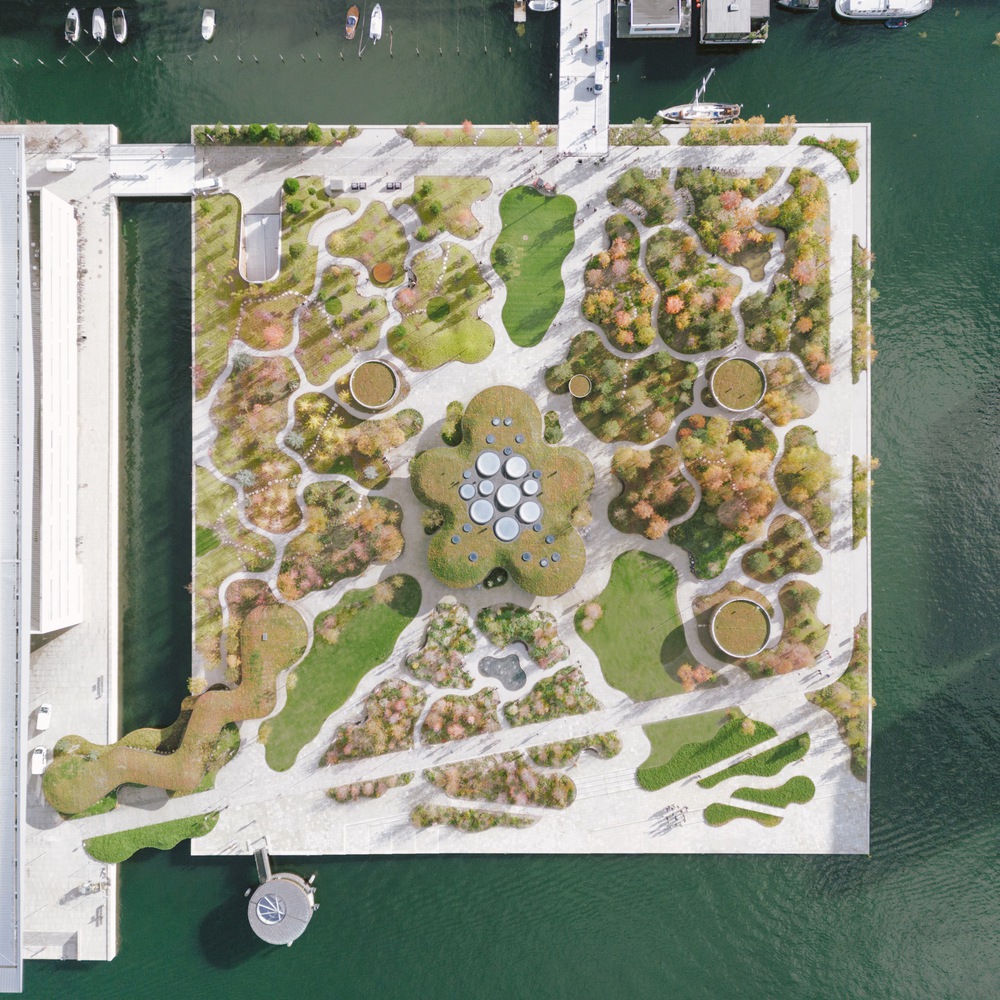
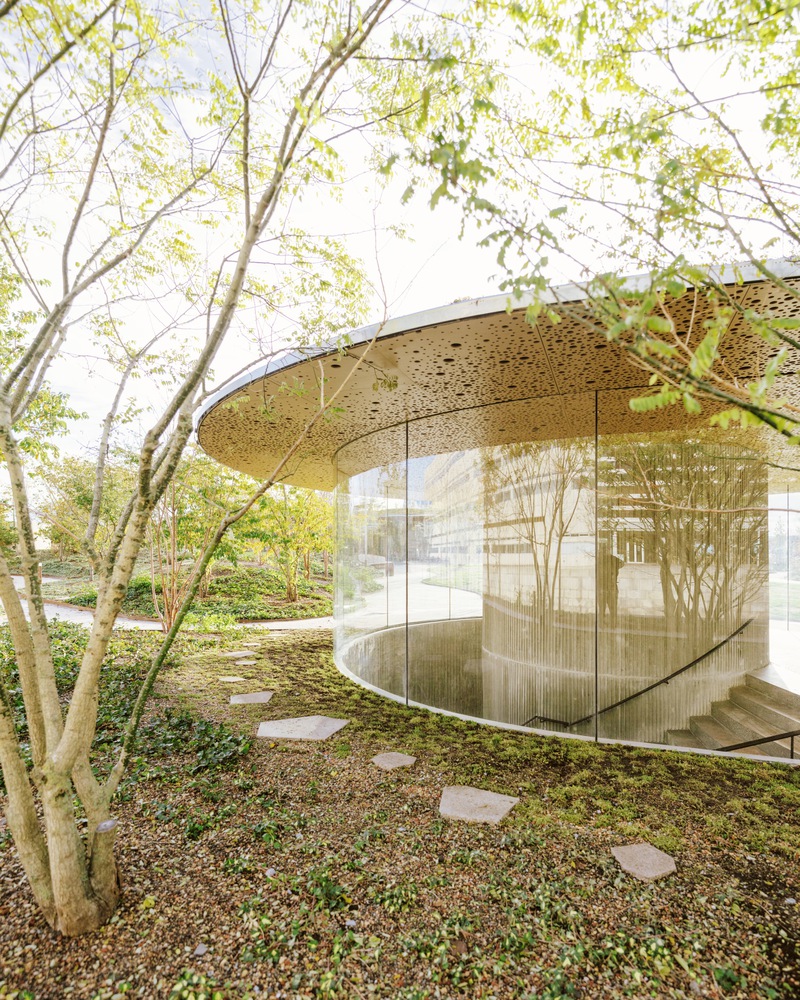
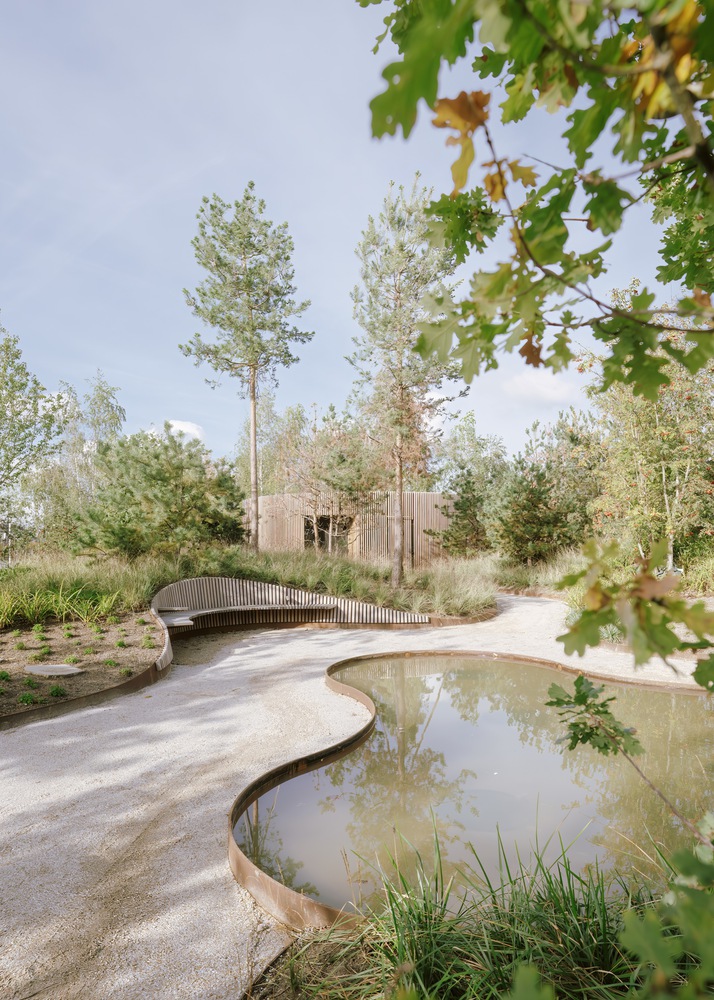
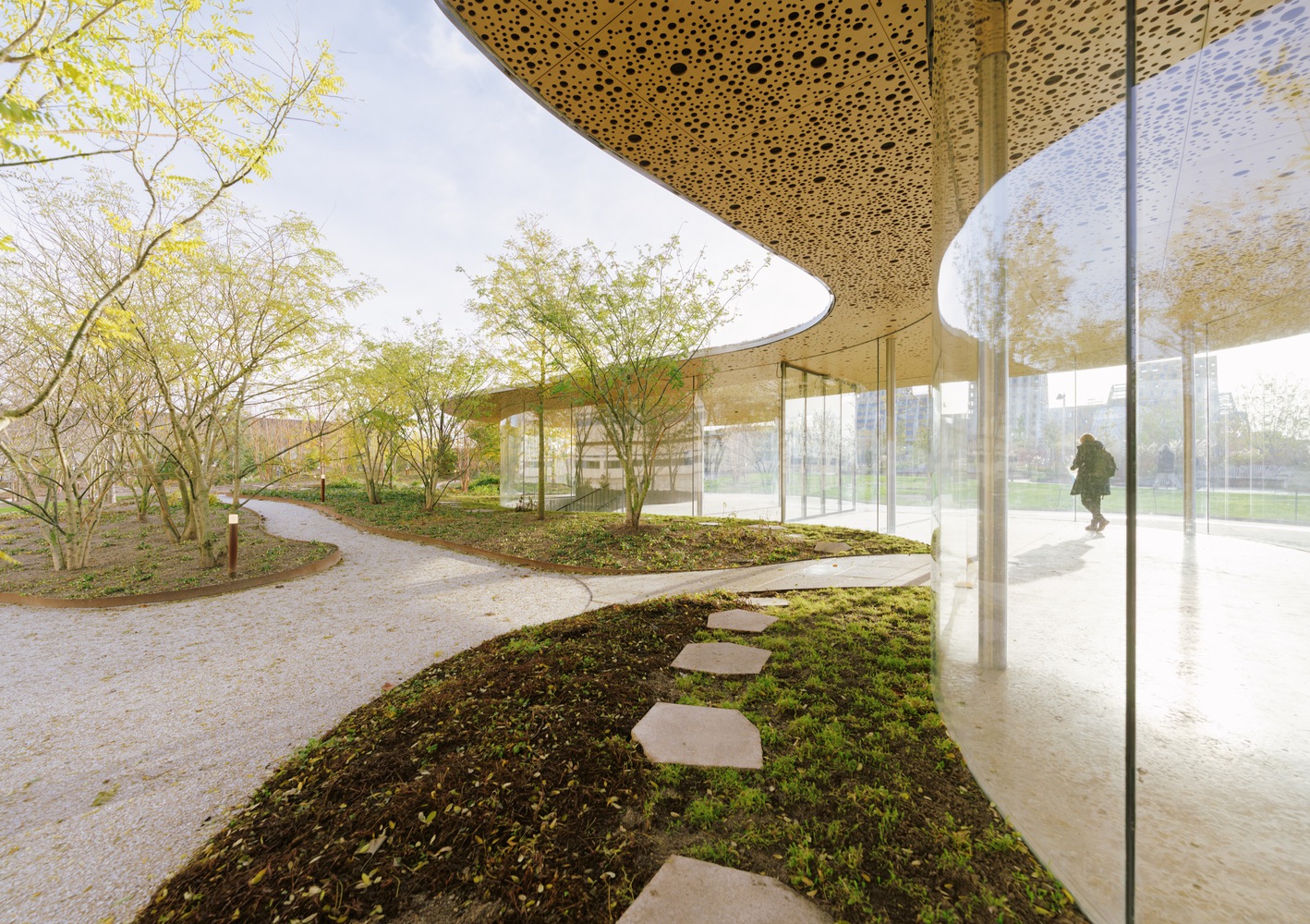
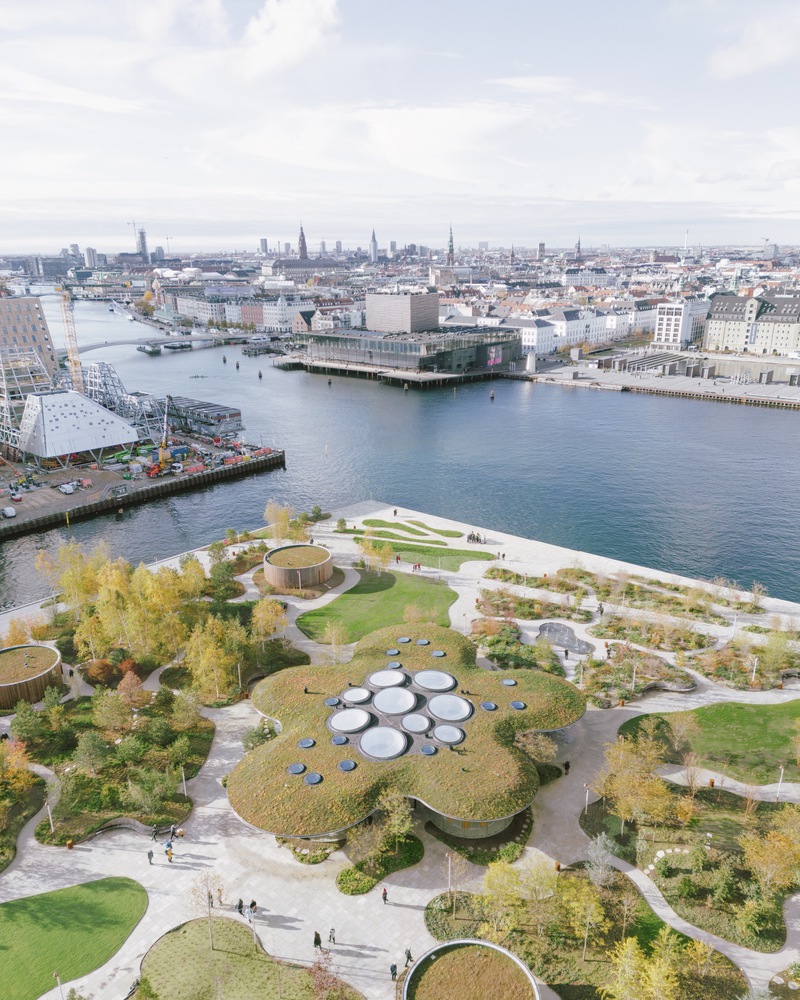

Halo丨The Pinewood Studio
气候盒子 | “空间之间”CQU Inter-Space Studio工作室
昆山城市广场地上景观建筑丨大舟建筑
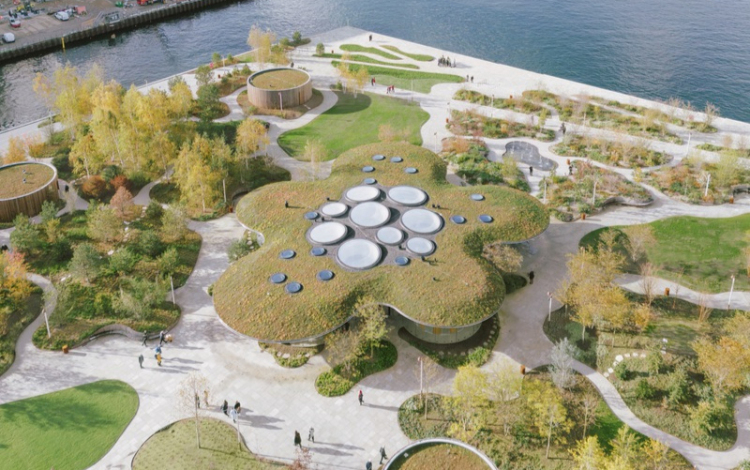

Opera Park | COBE

Ultra-Fast Charging Stations for Electric Cars | COBE

吉利汽车瑞典设计中心 | COBE

ZONES I POLY VOLY 新办公空间丨众舍设计事务所

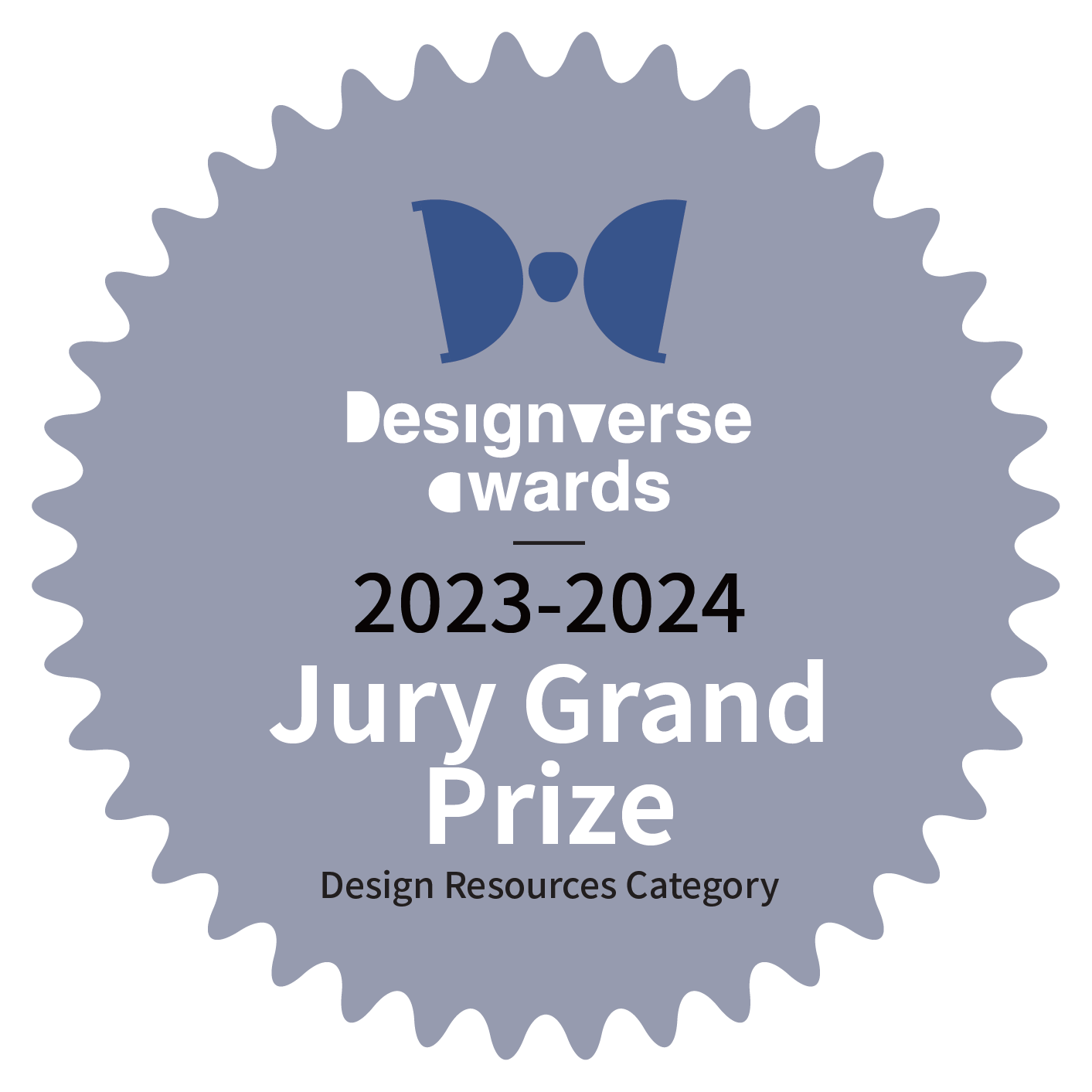
琴台美术馆 | 大舍建筑设计事务所


对话|威尼斯双年展主题展参展建筑师孟凡浩:建筑如何引领“共生”

订阅我们的资讯
切勿错过全球大设计产业链大事件和重要设计资源公司和新产品的推荐
联系我们
举报
返回顶部





